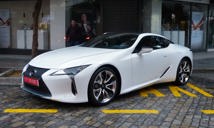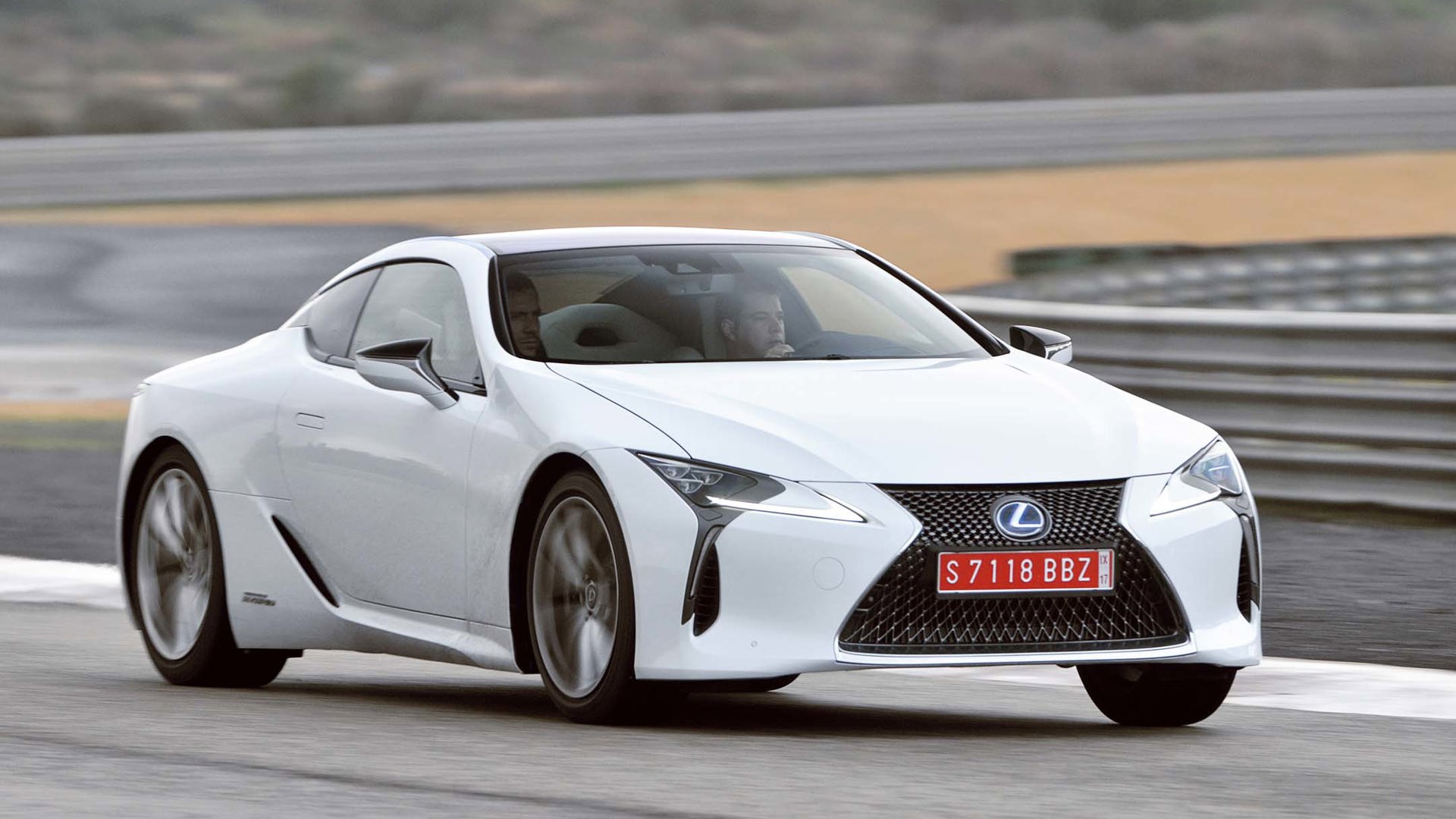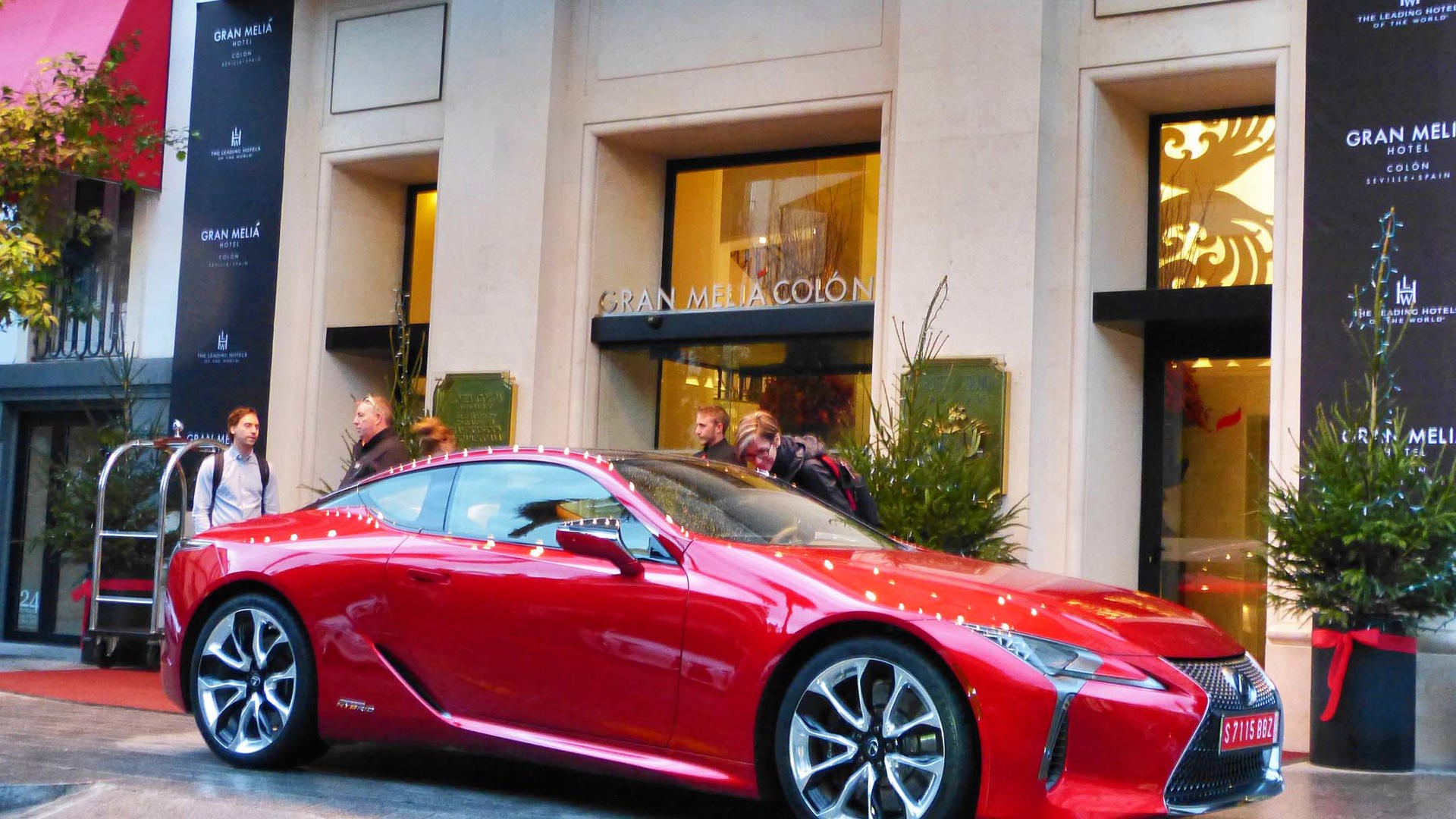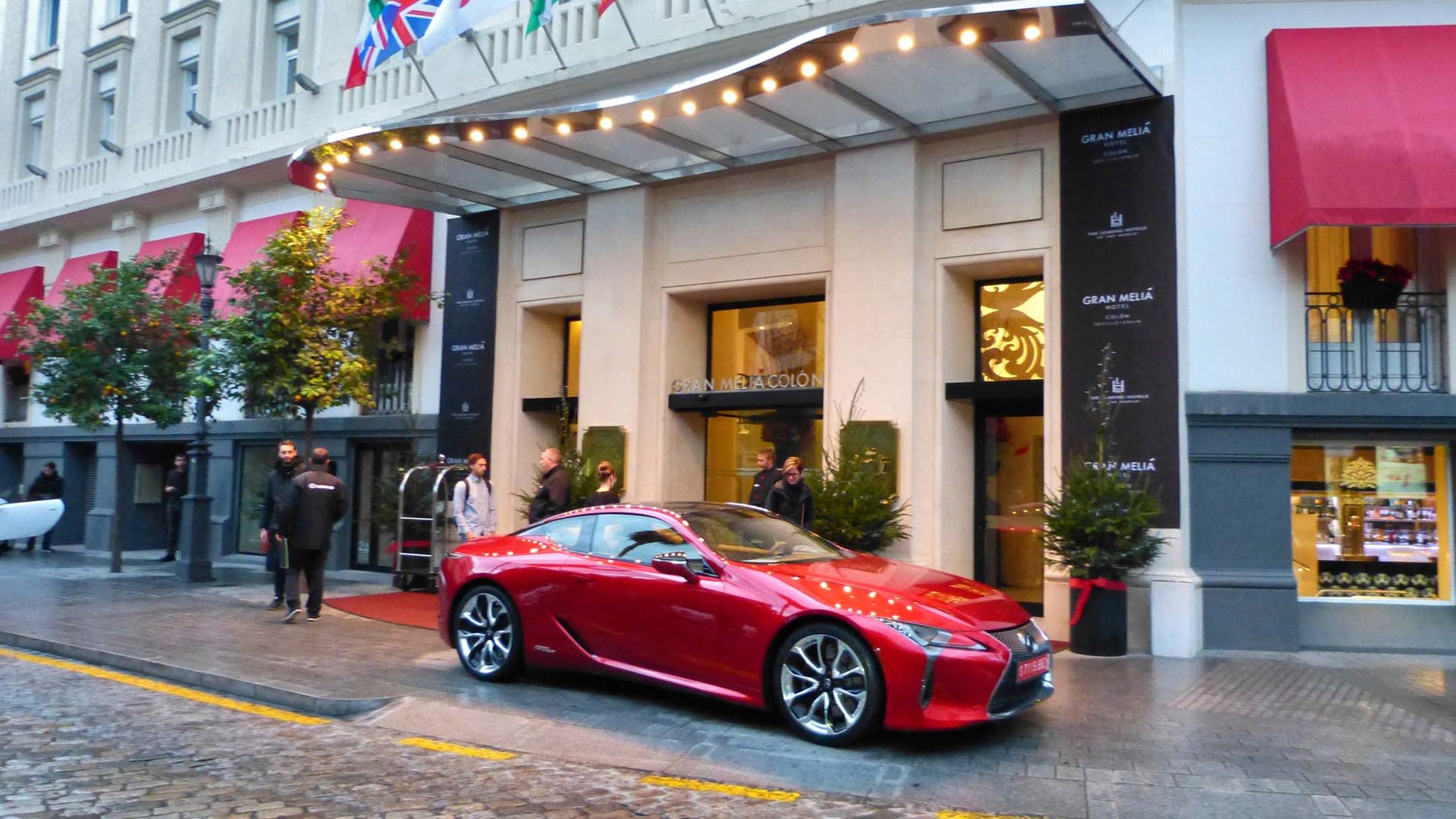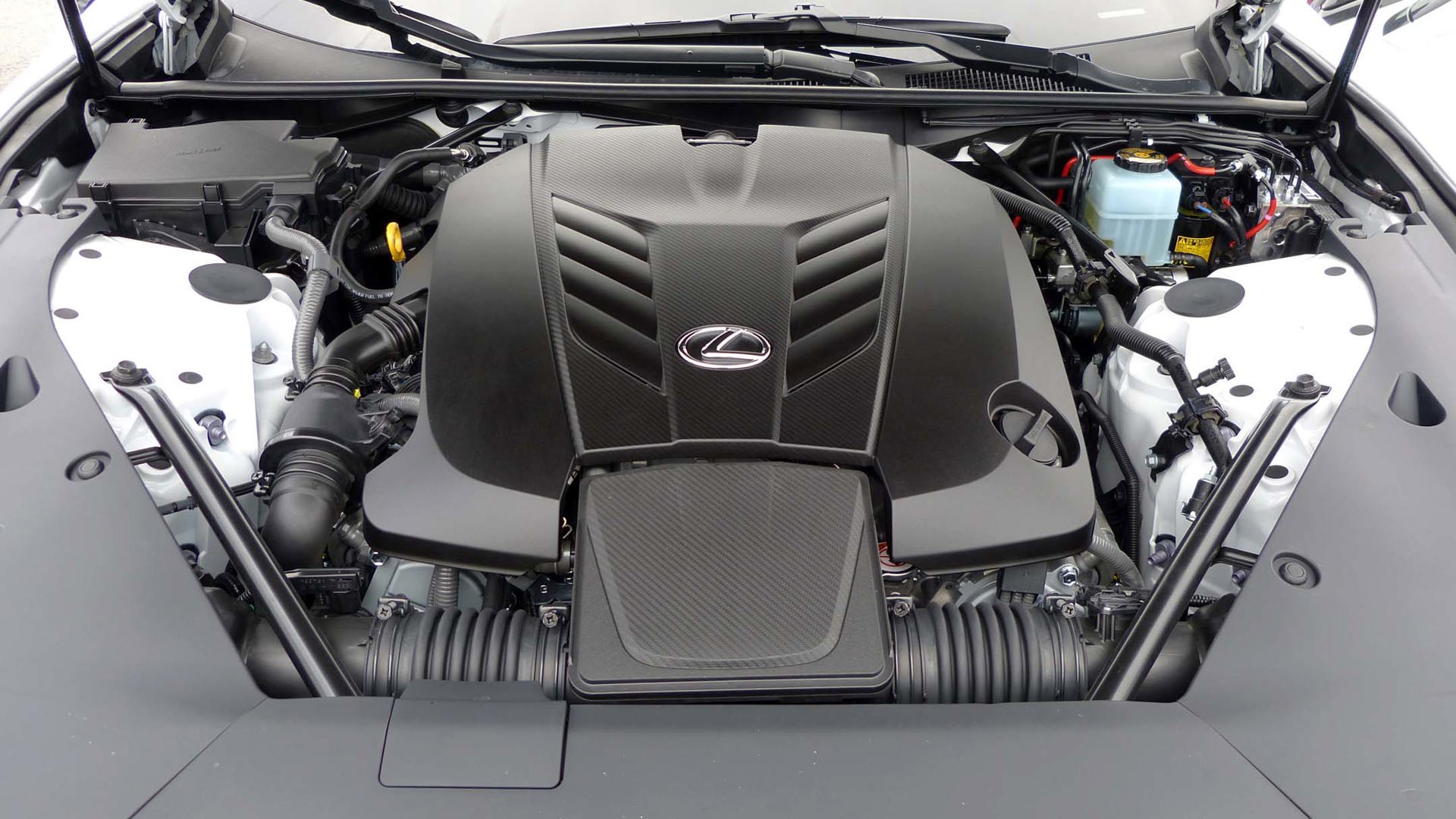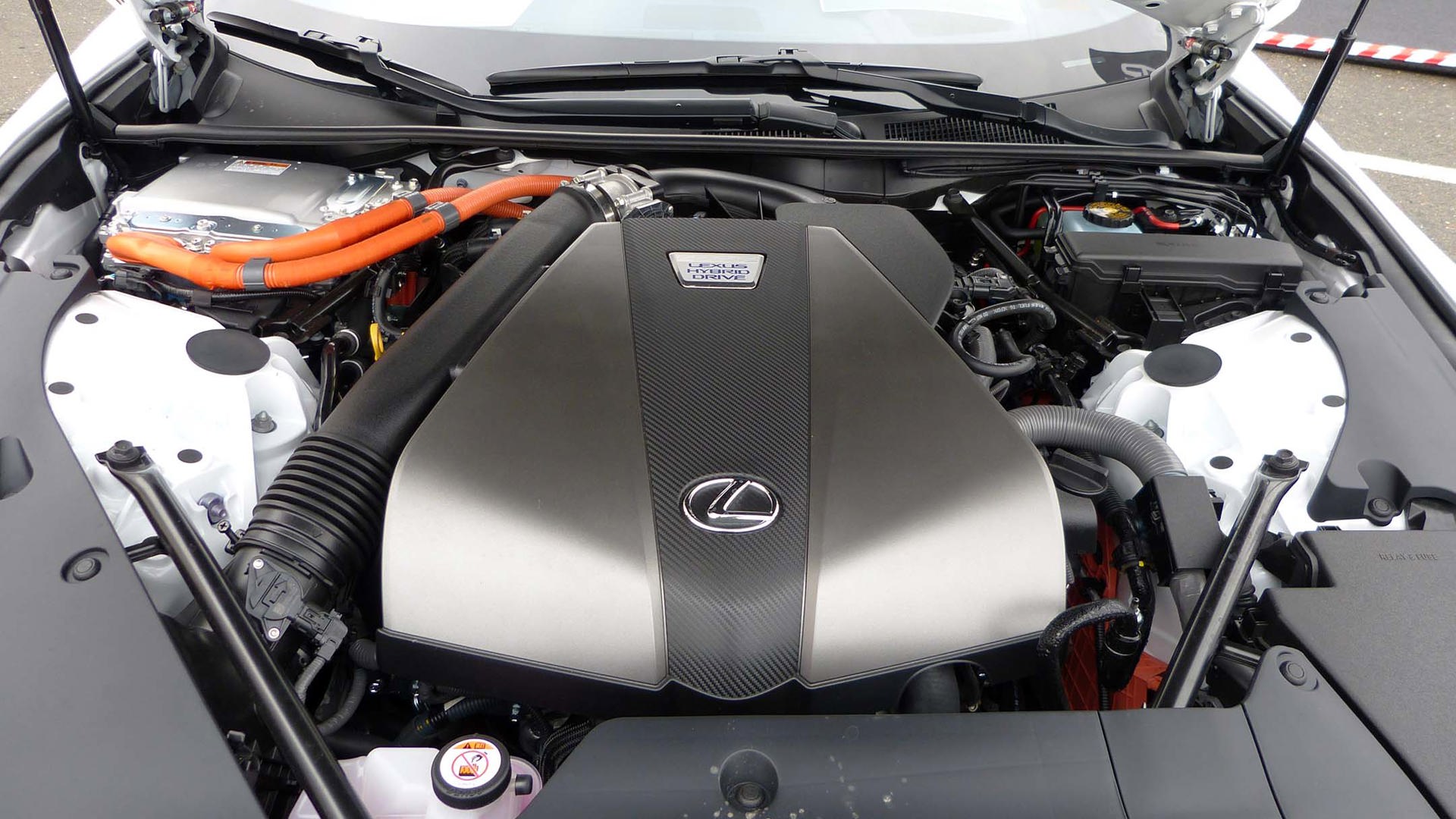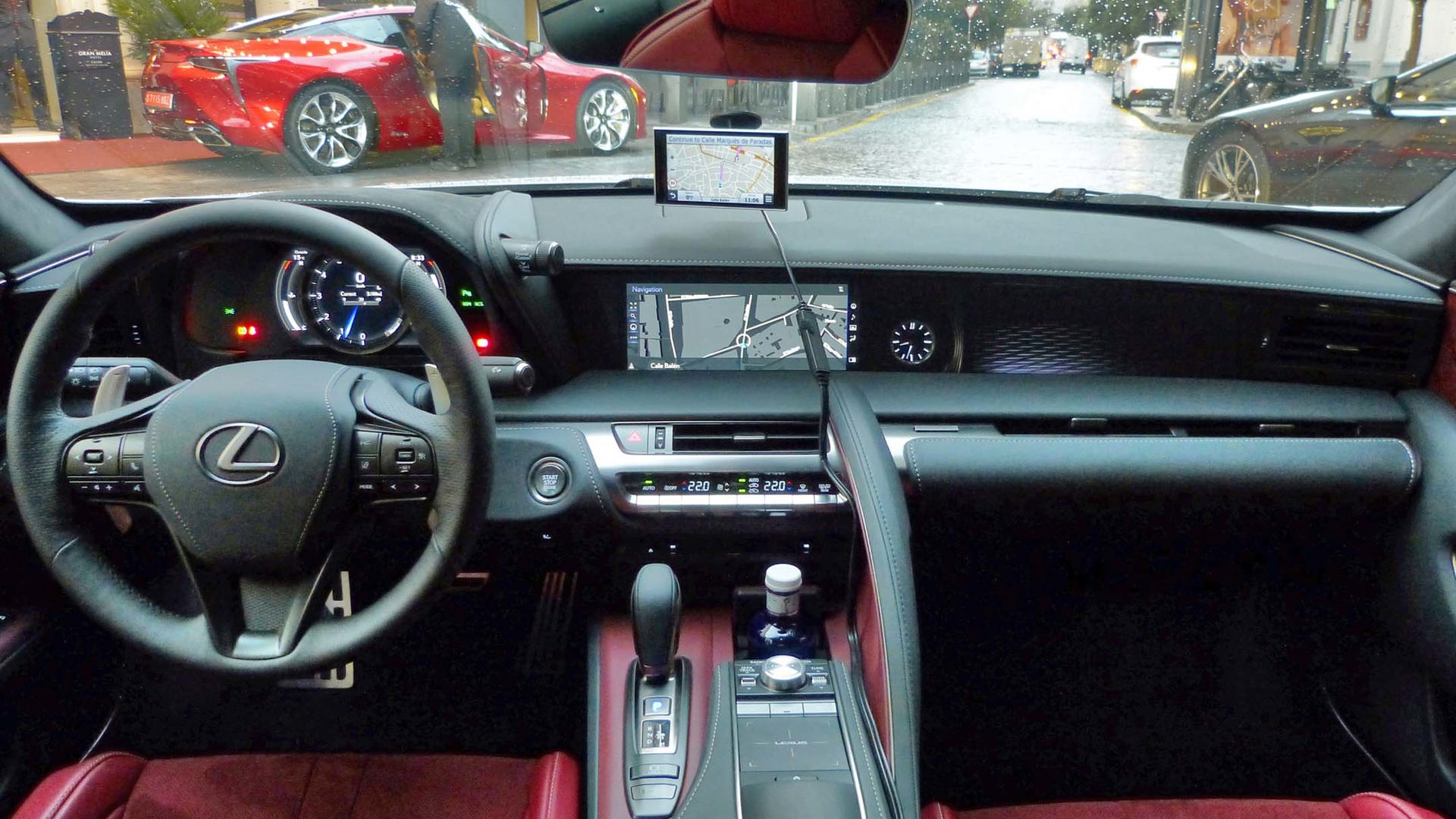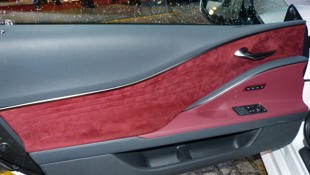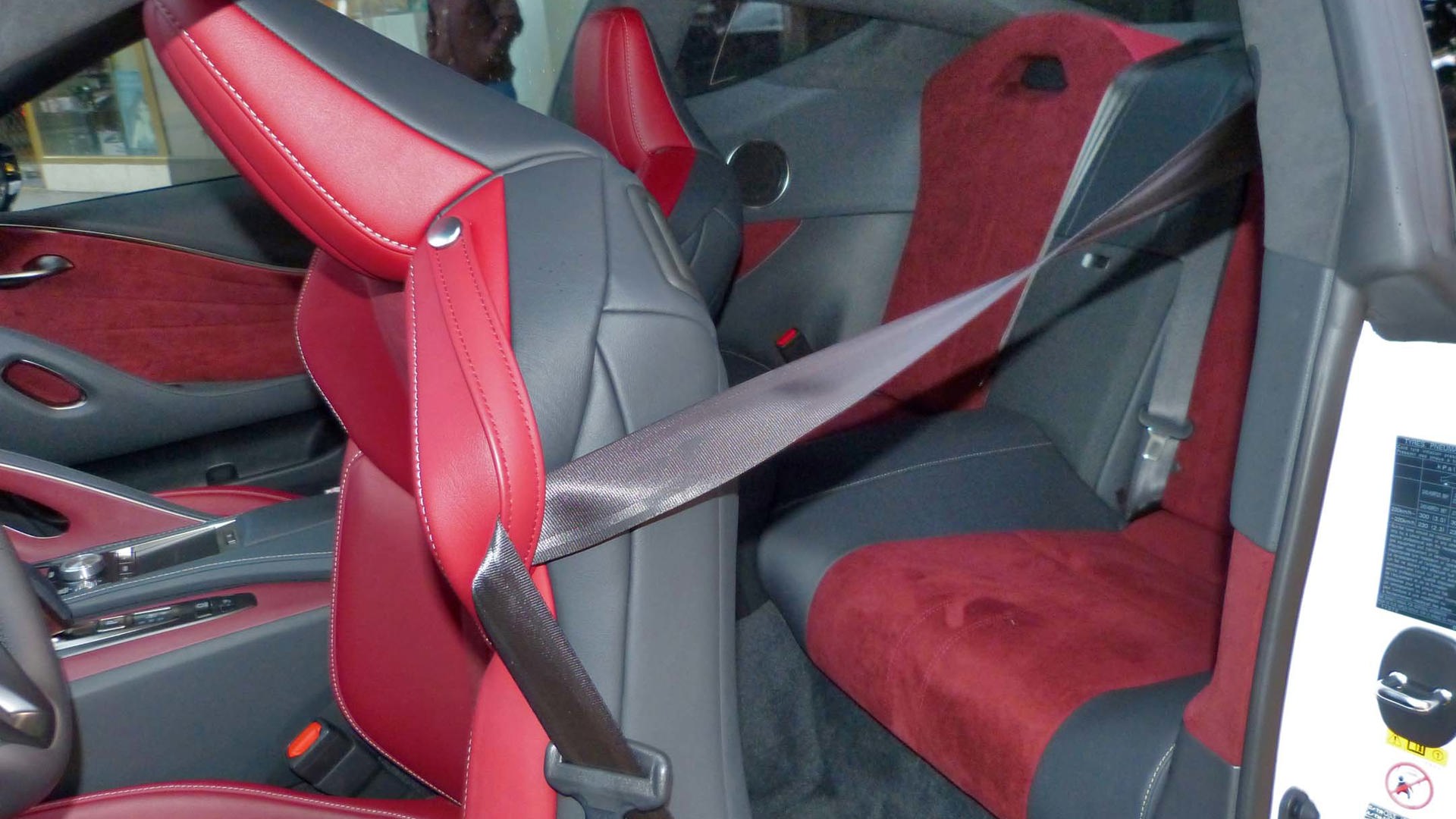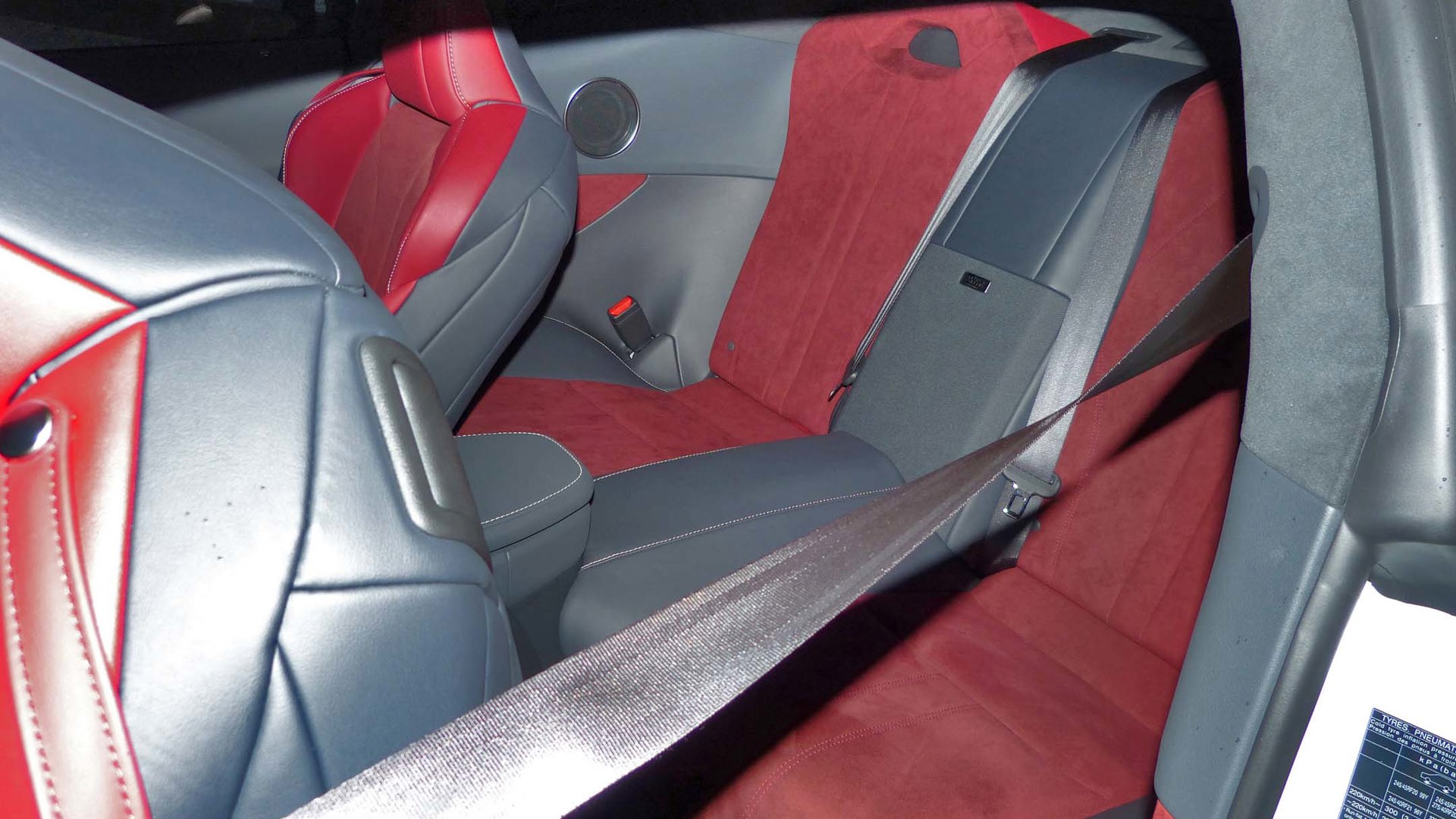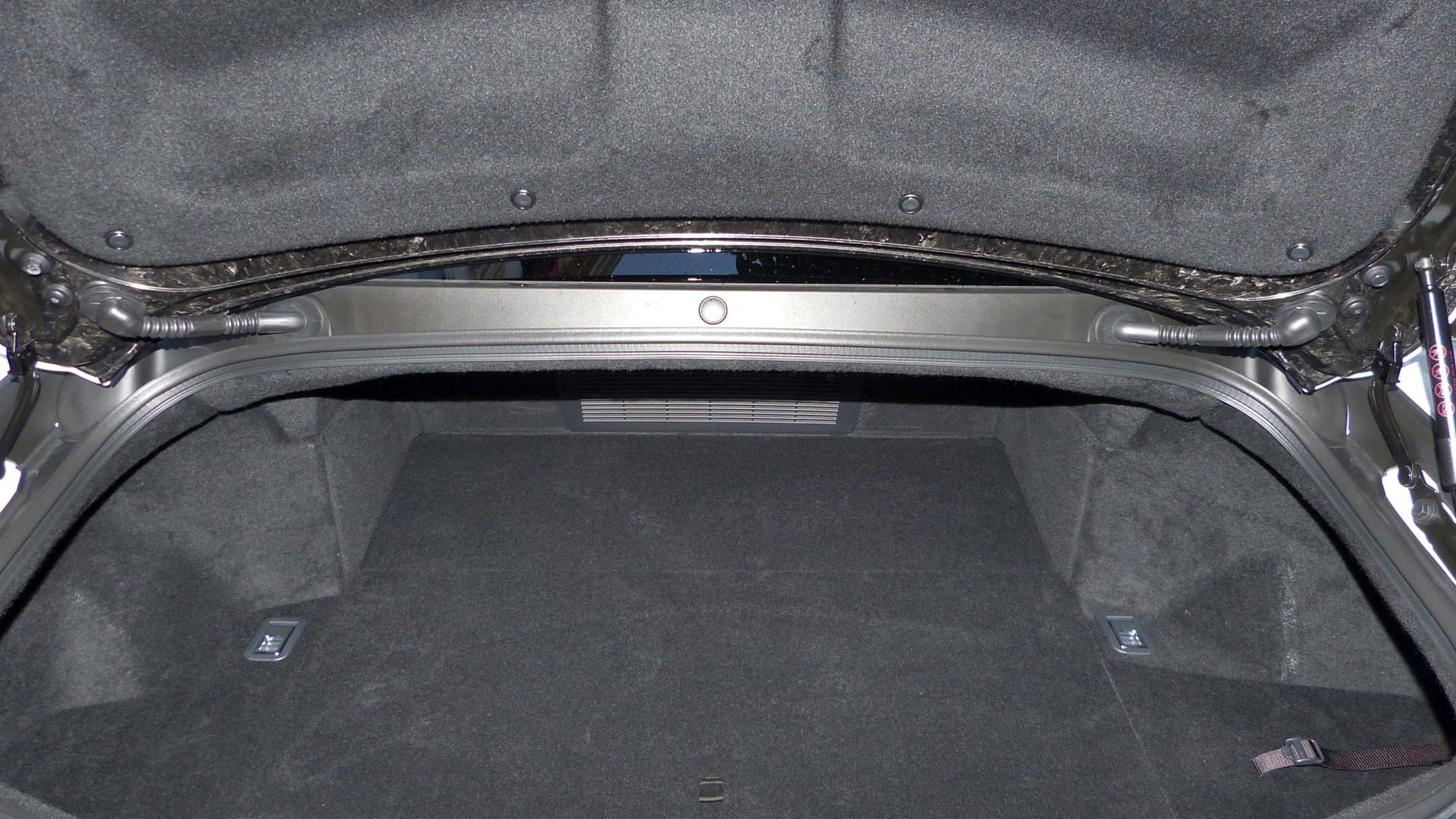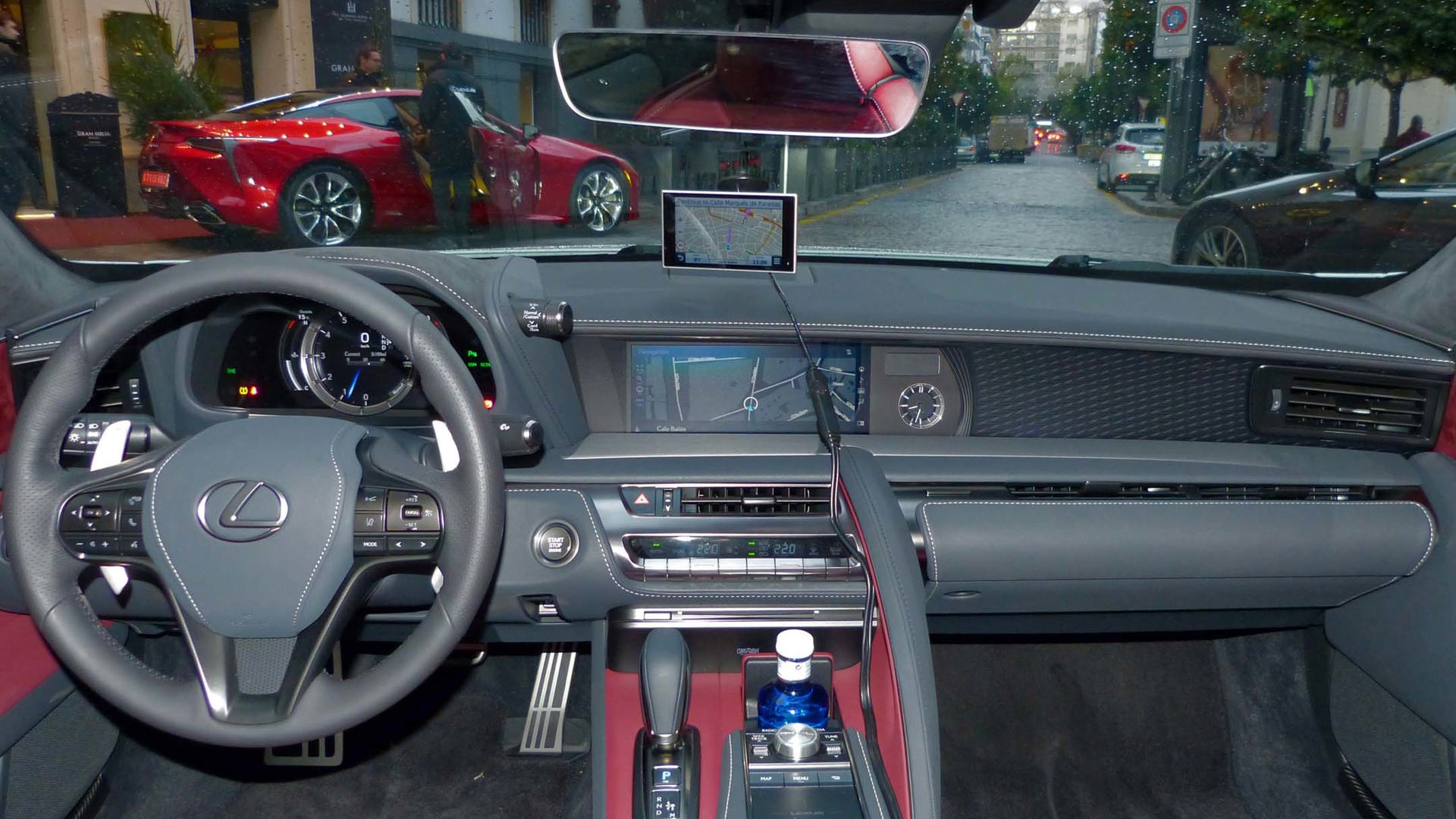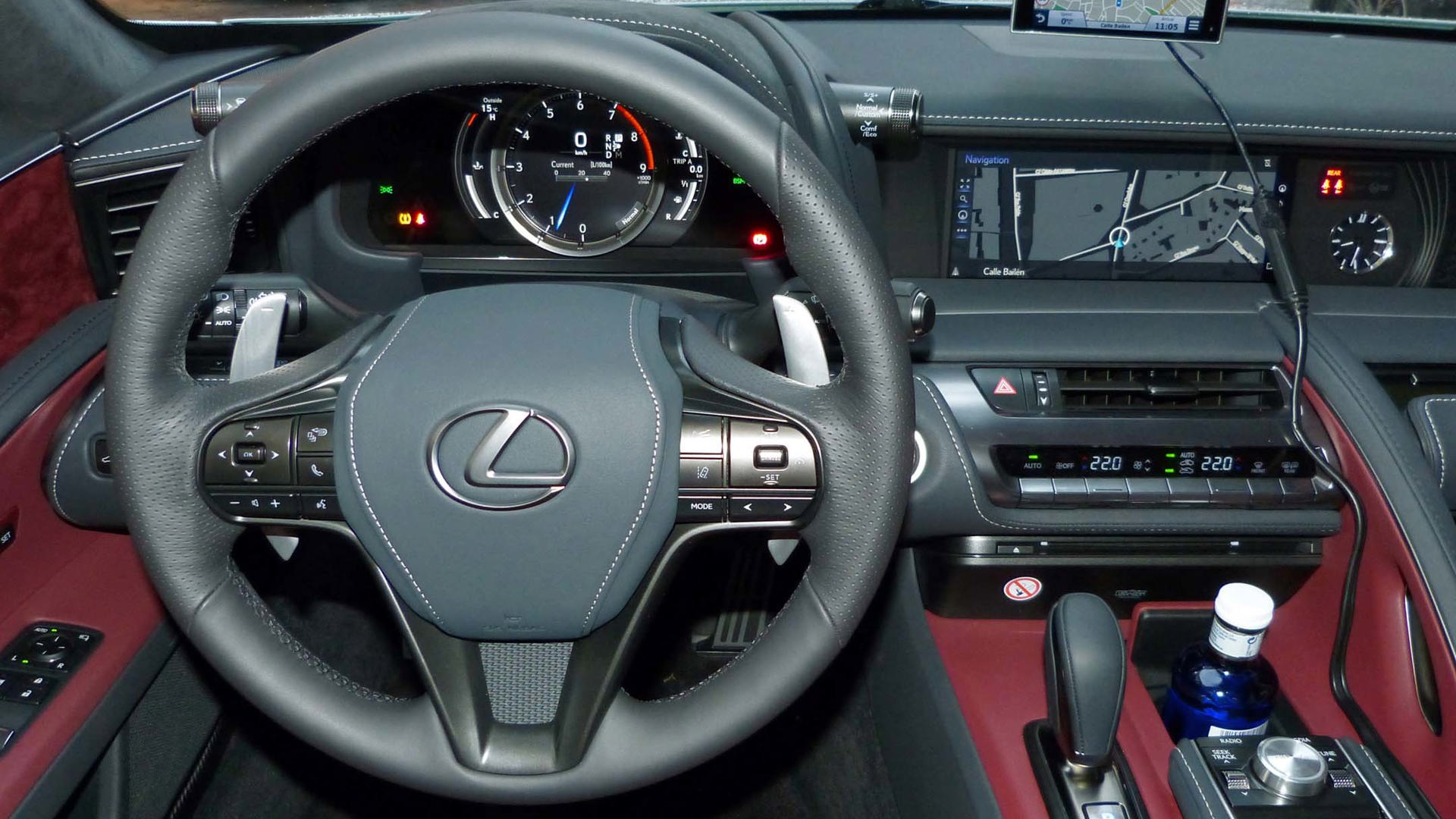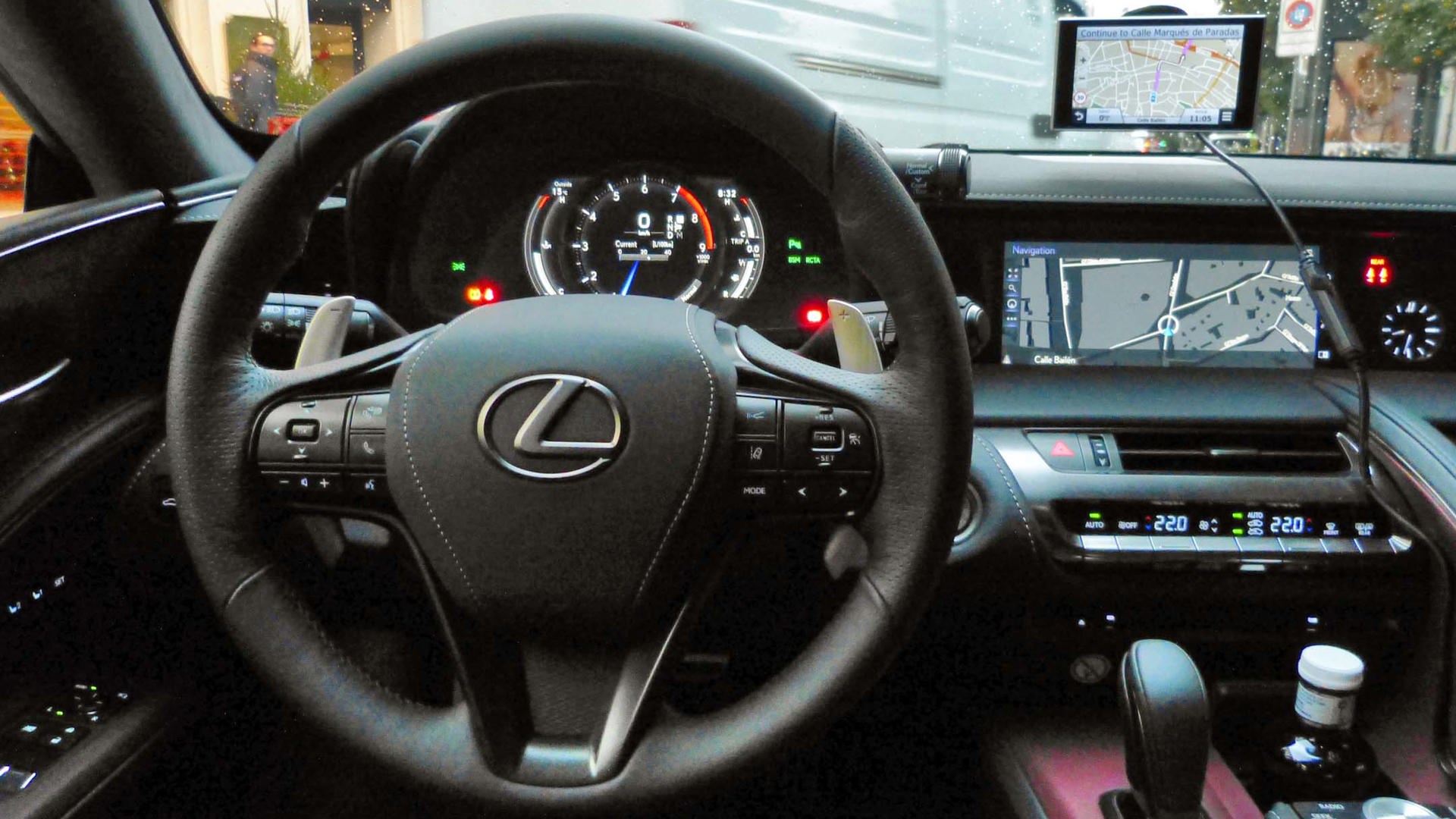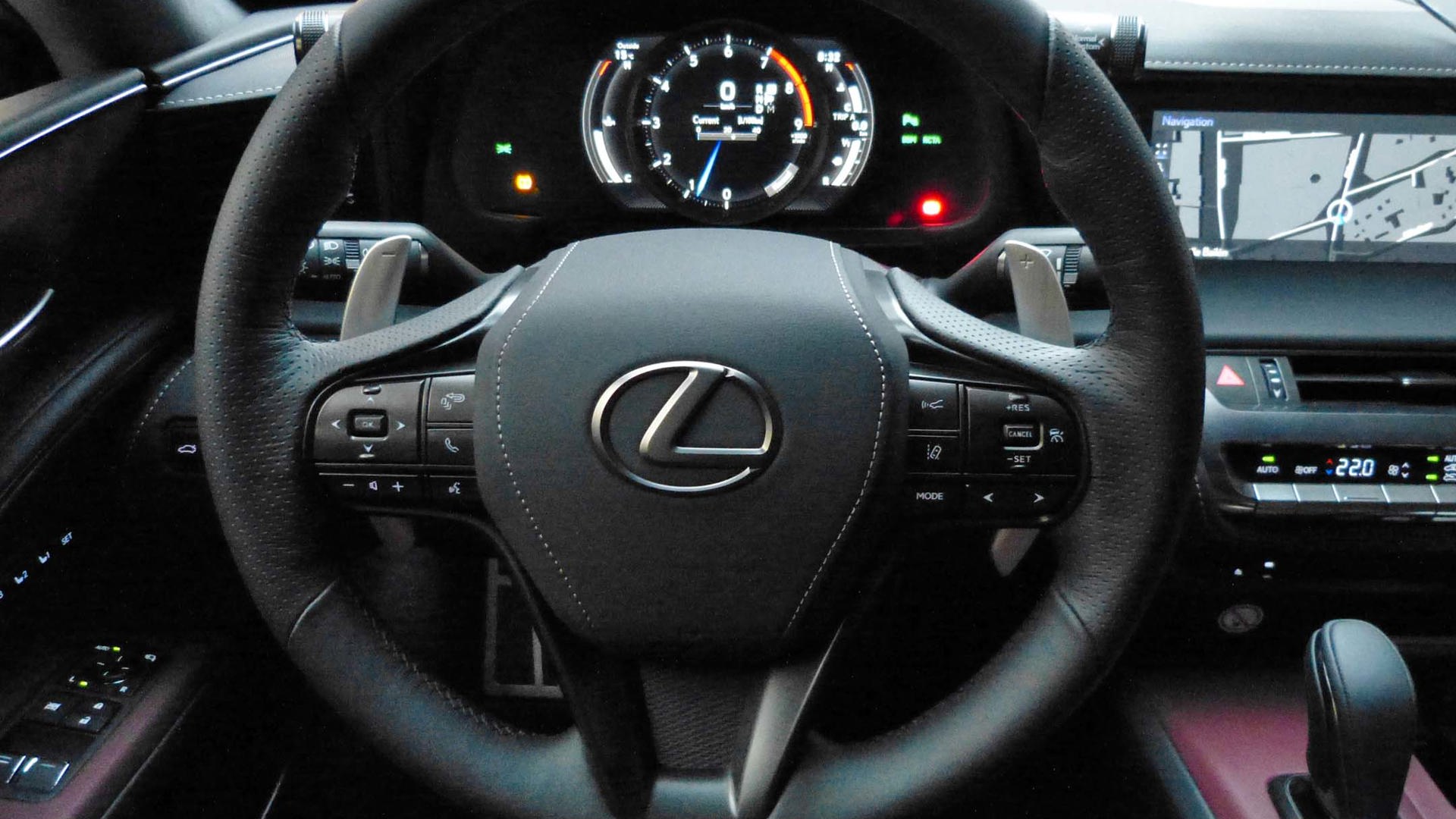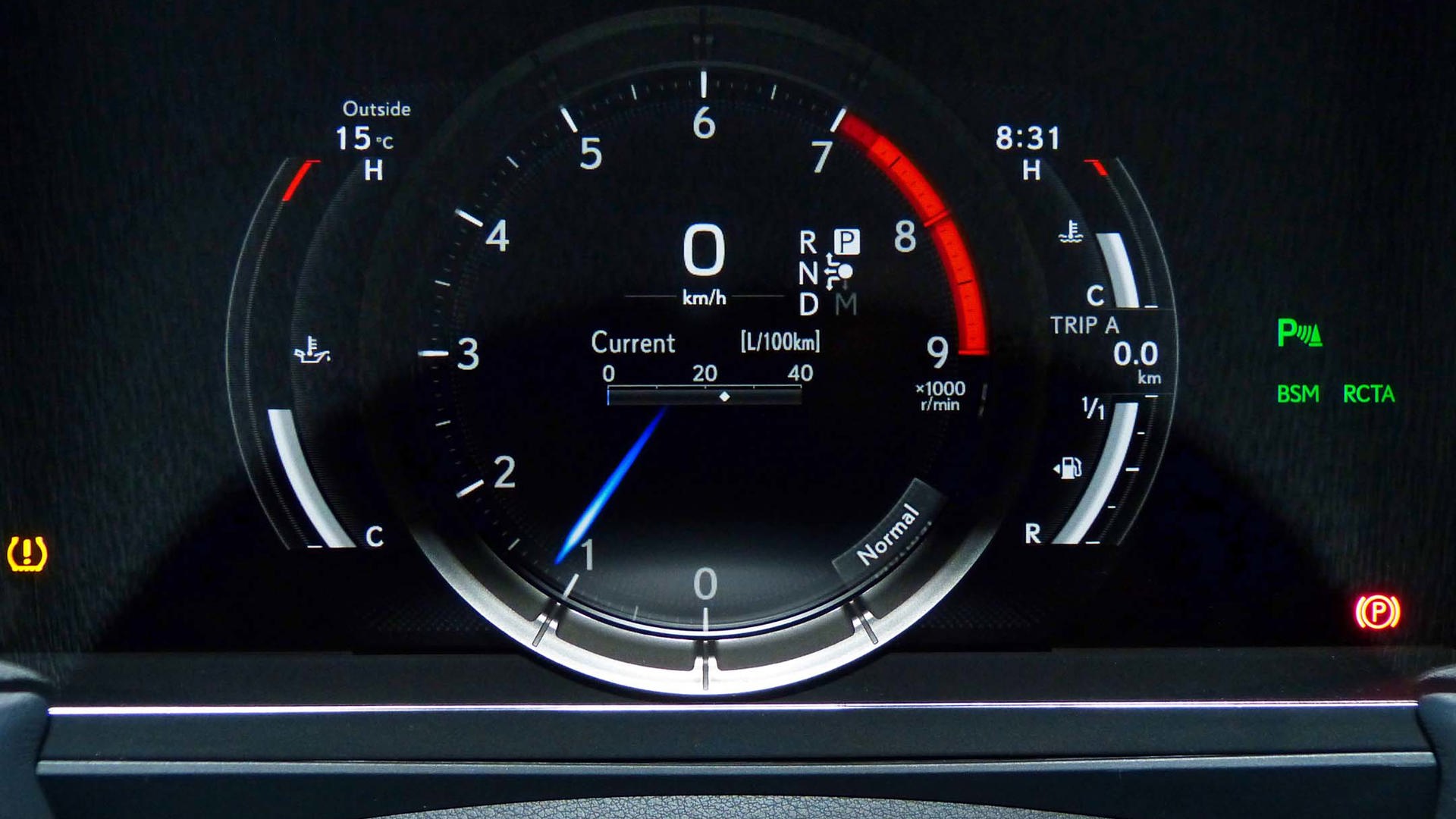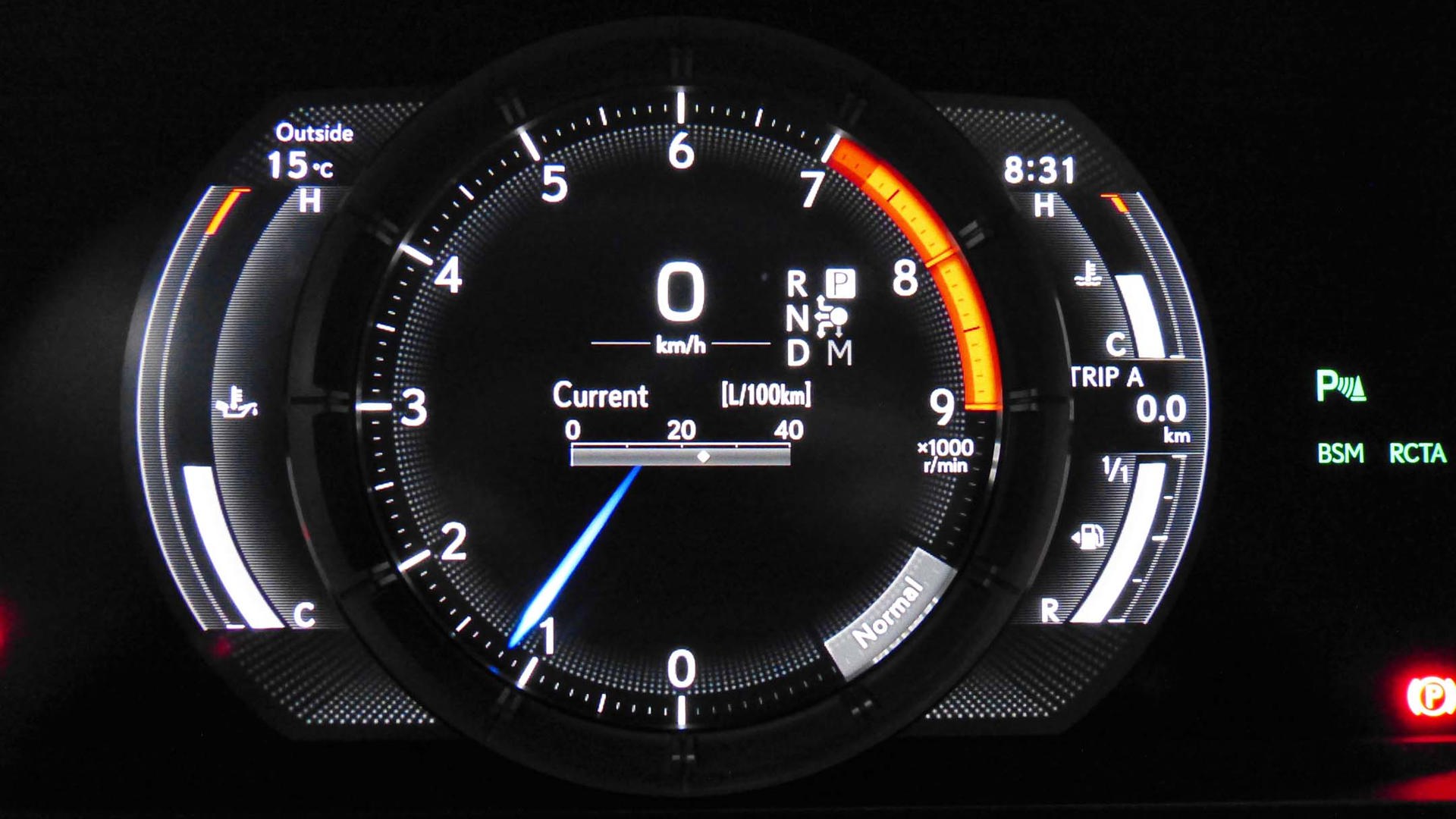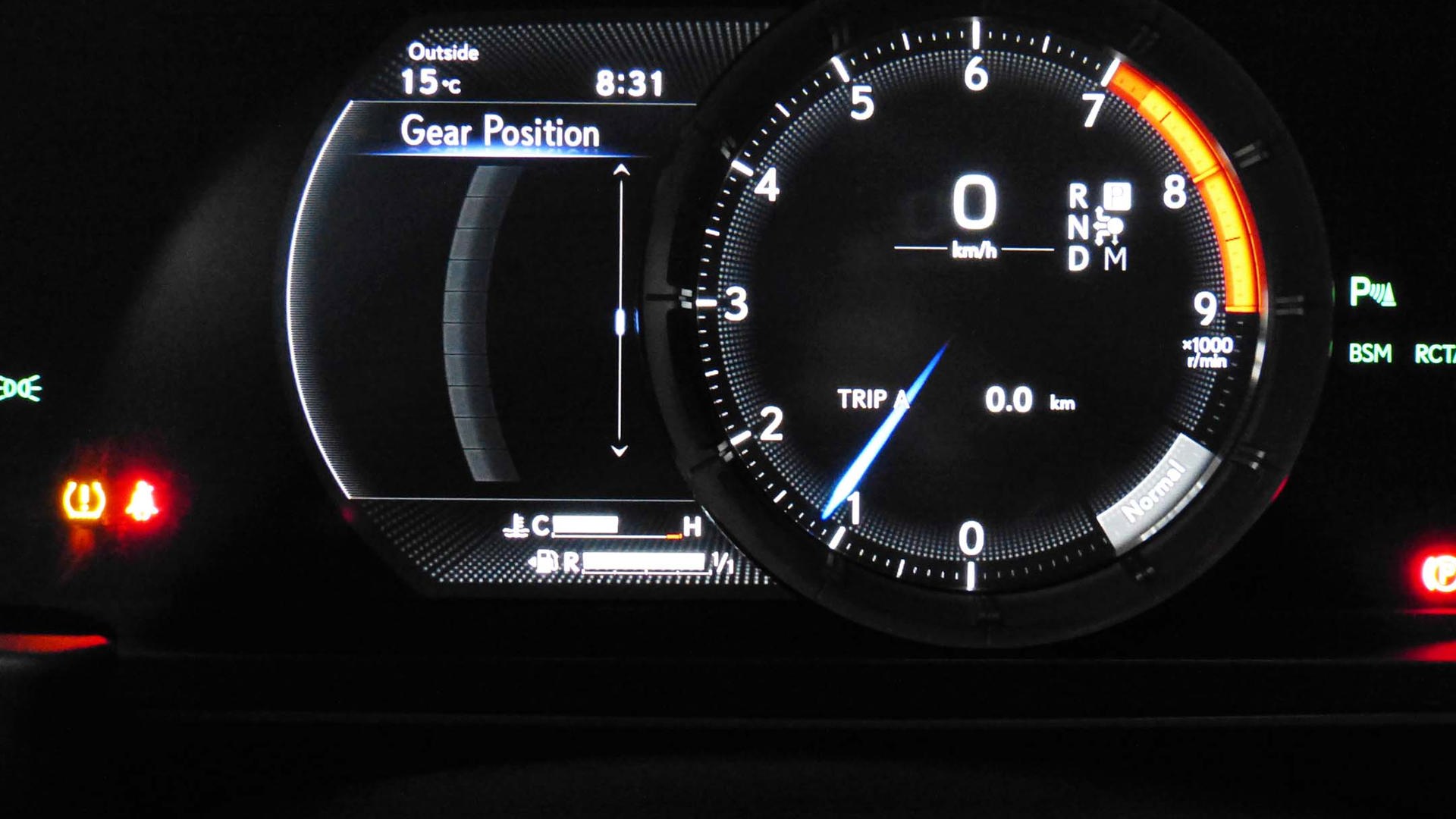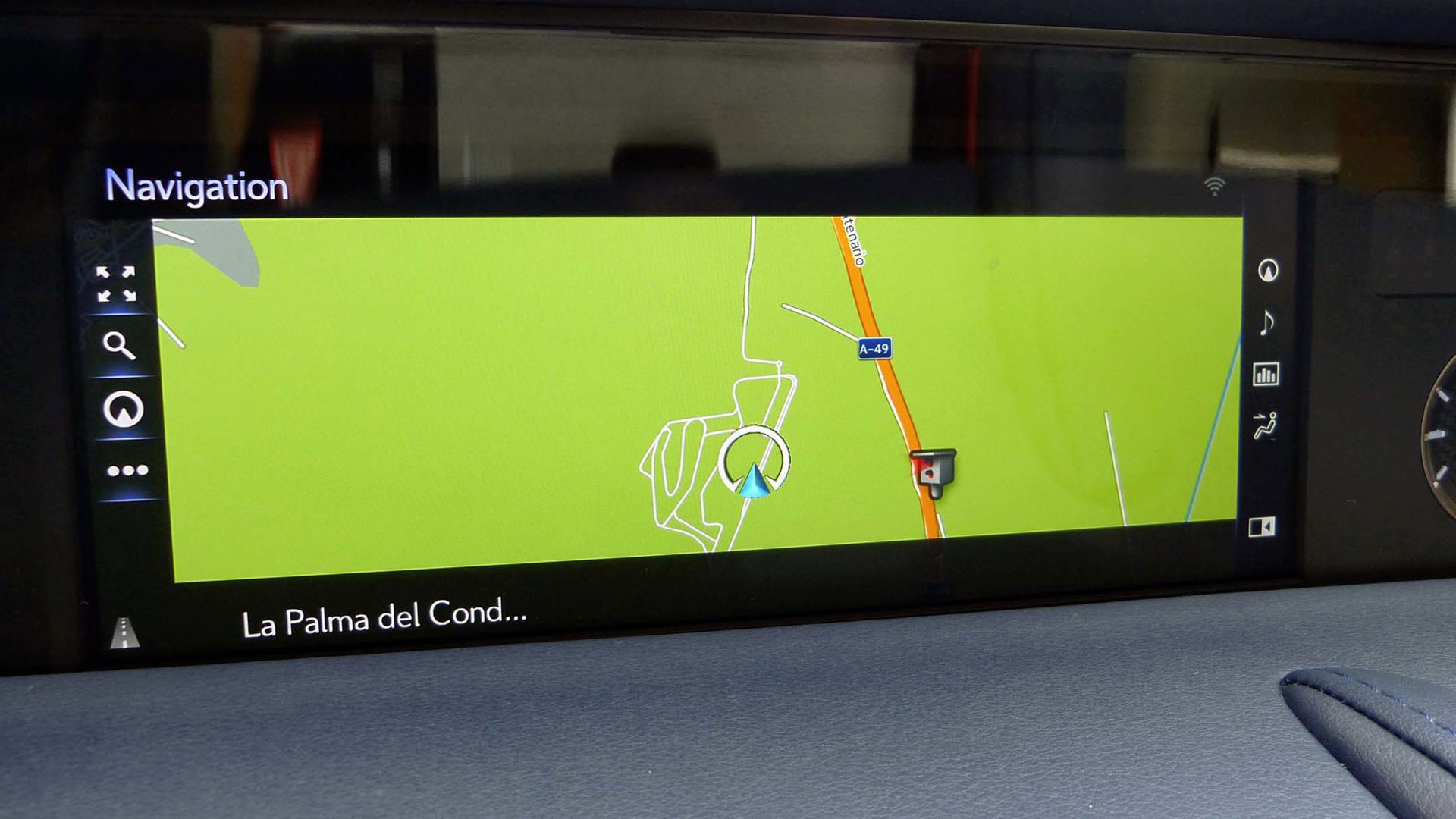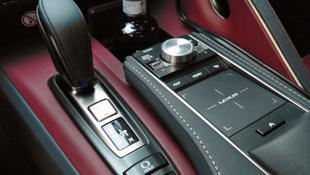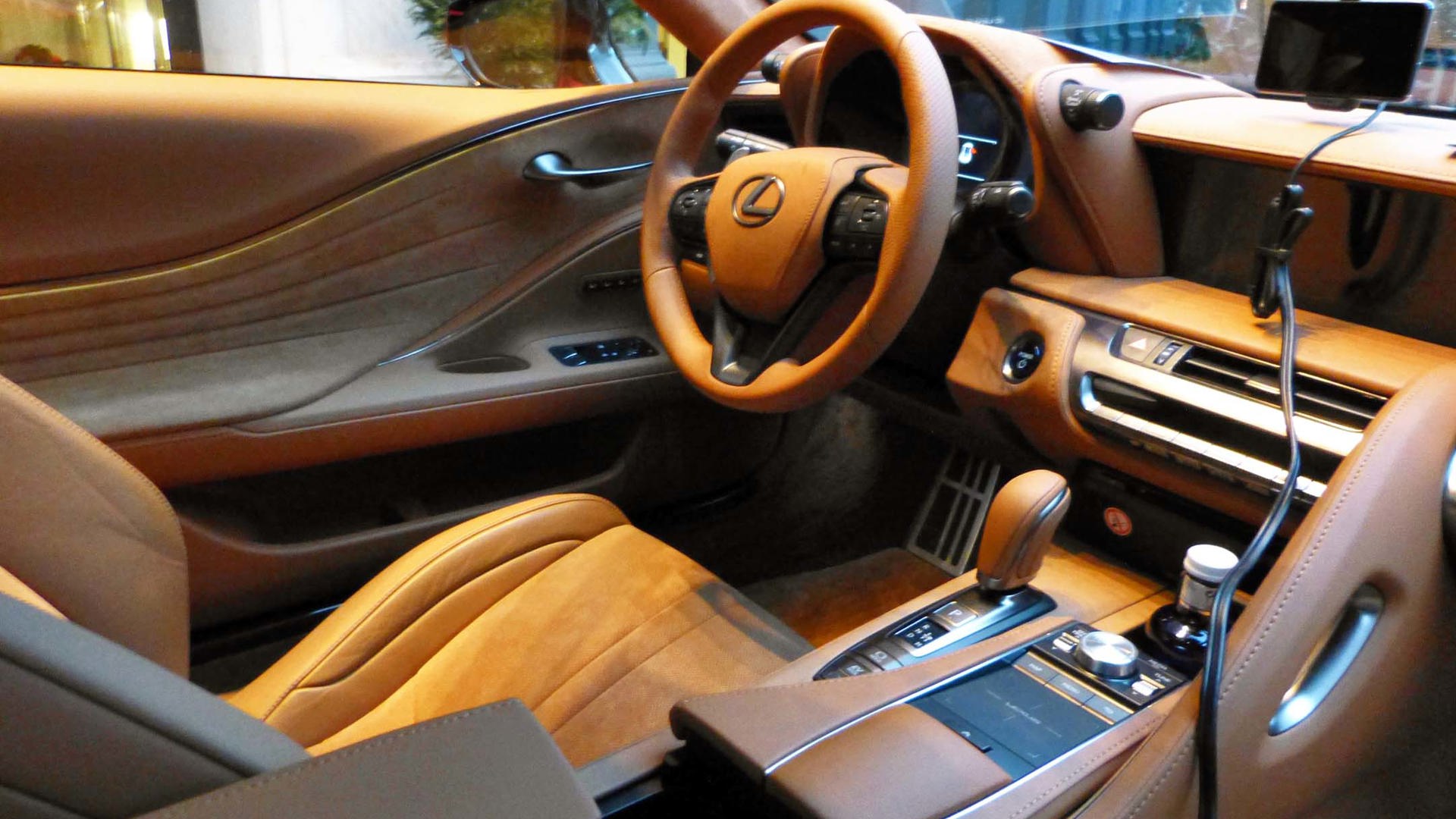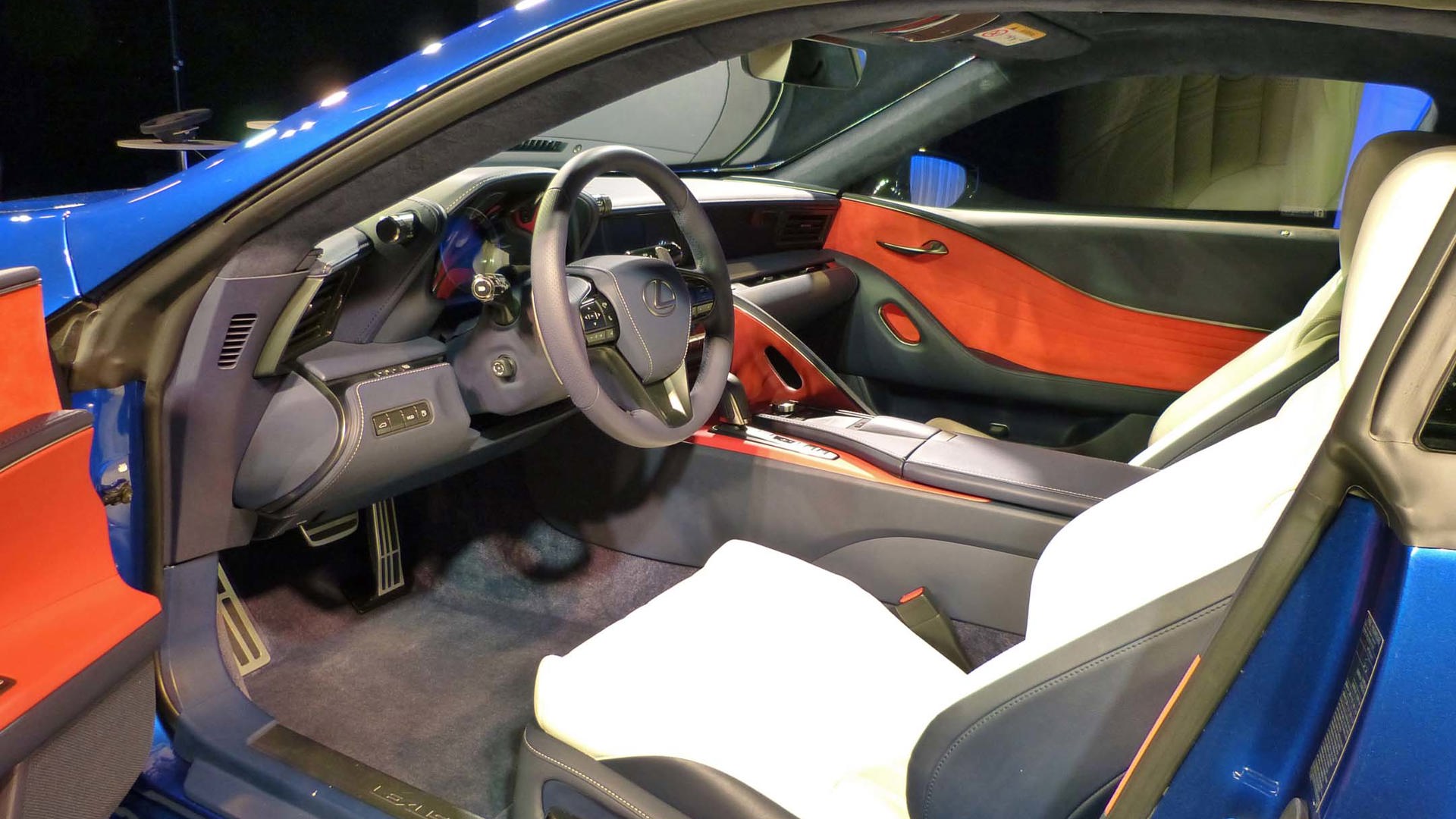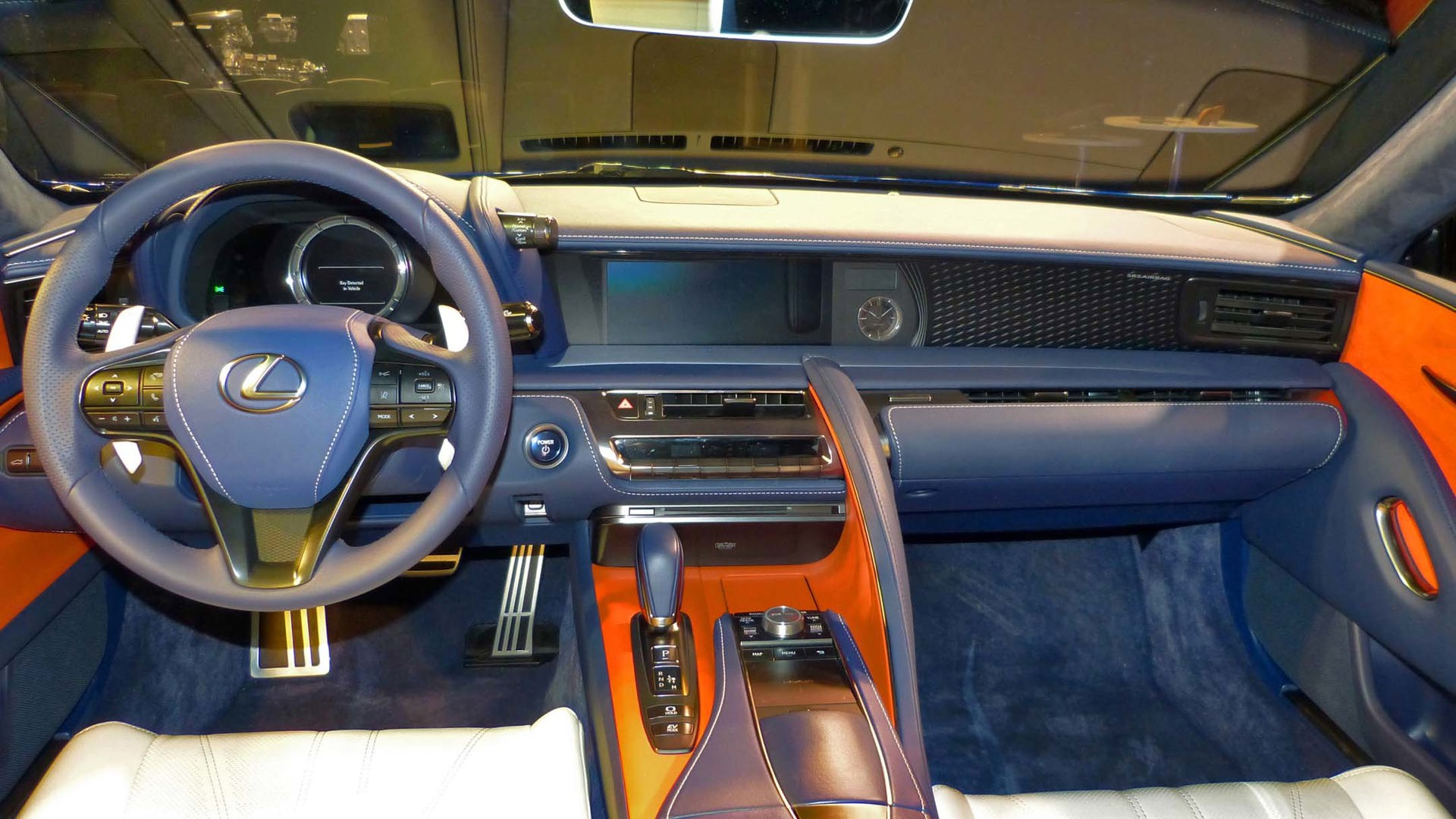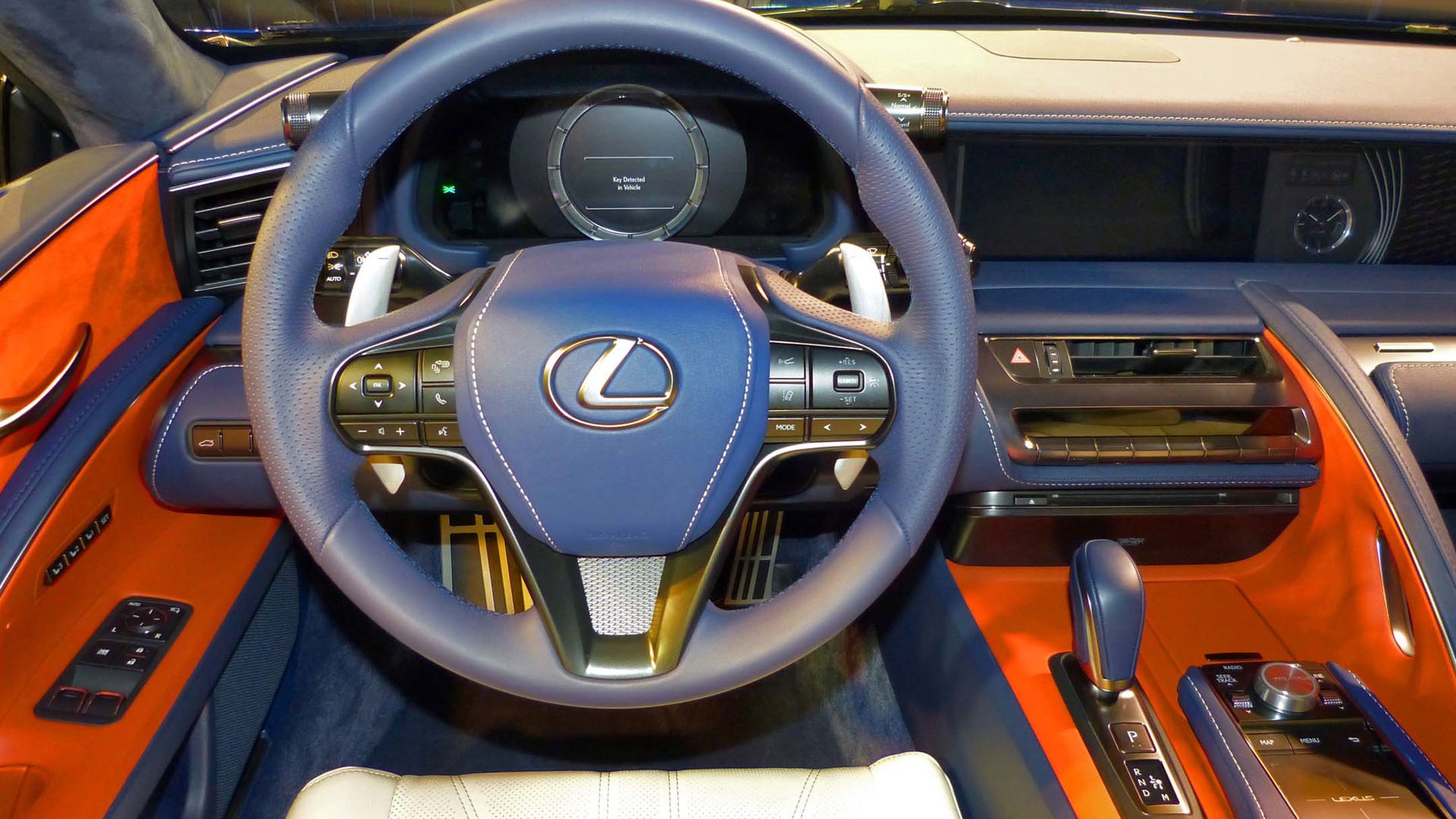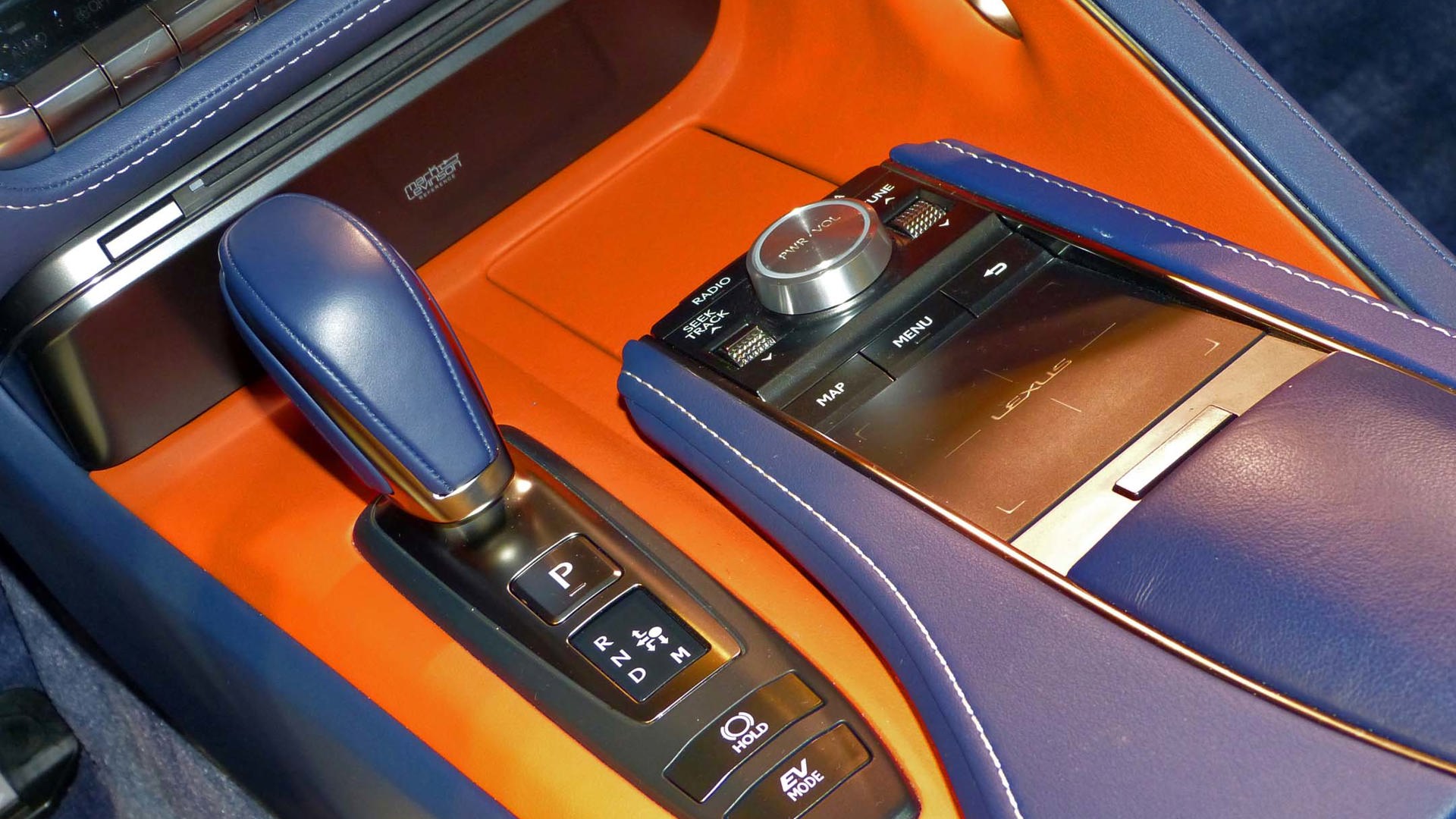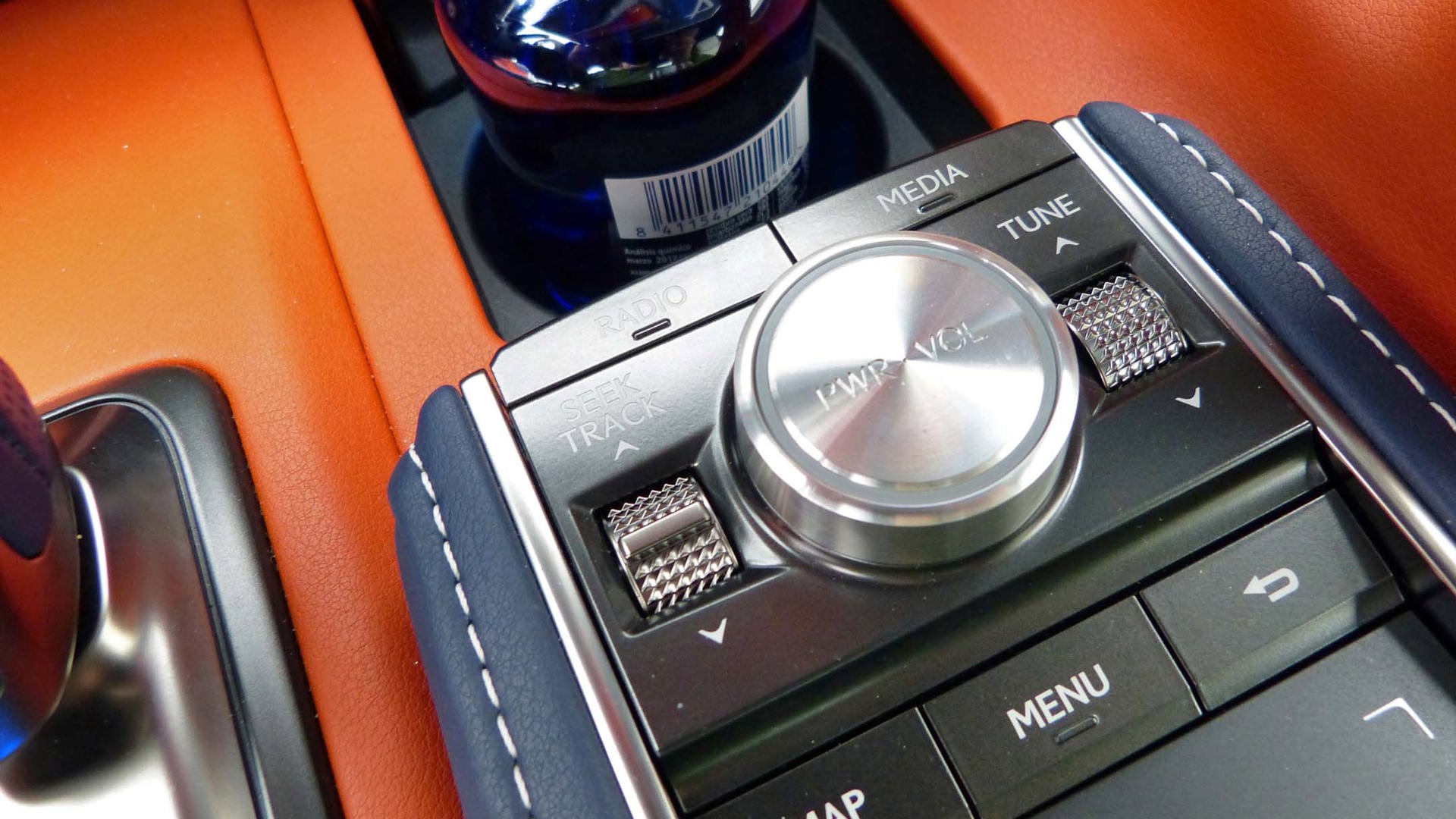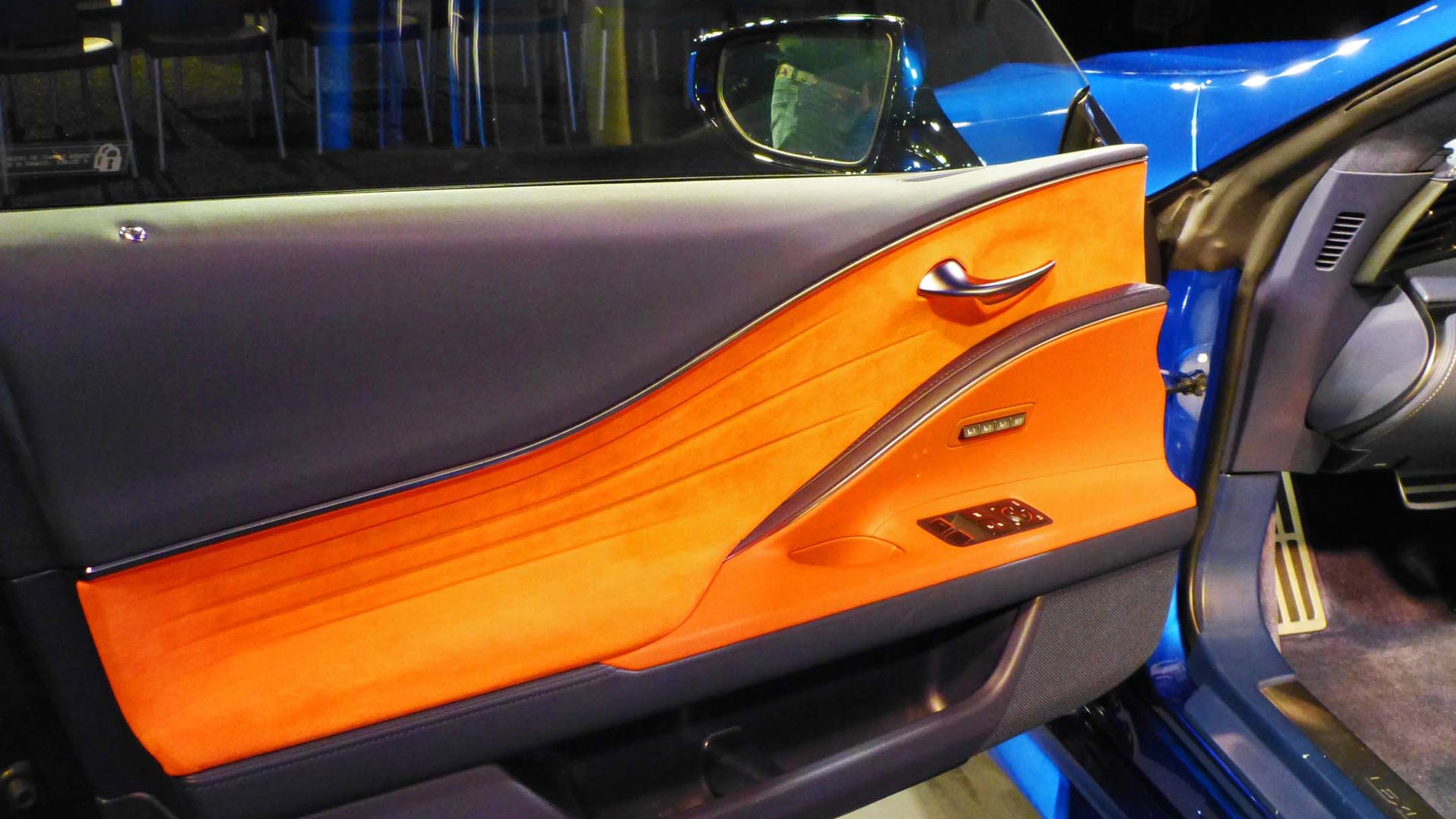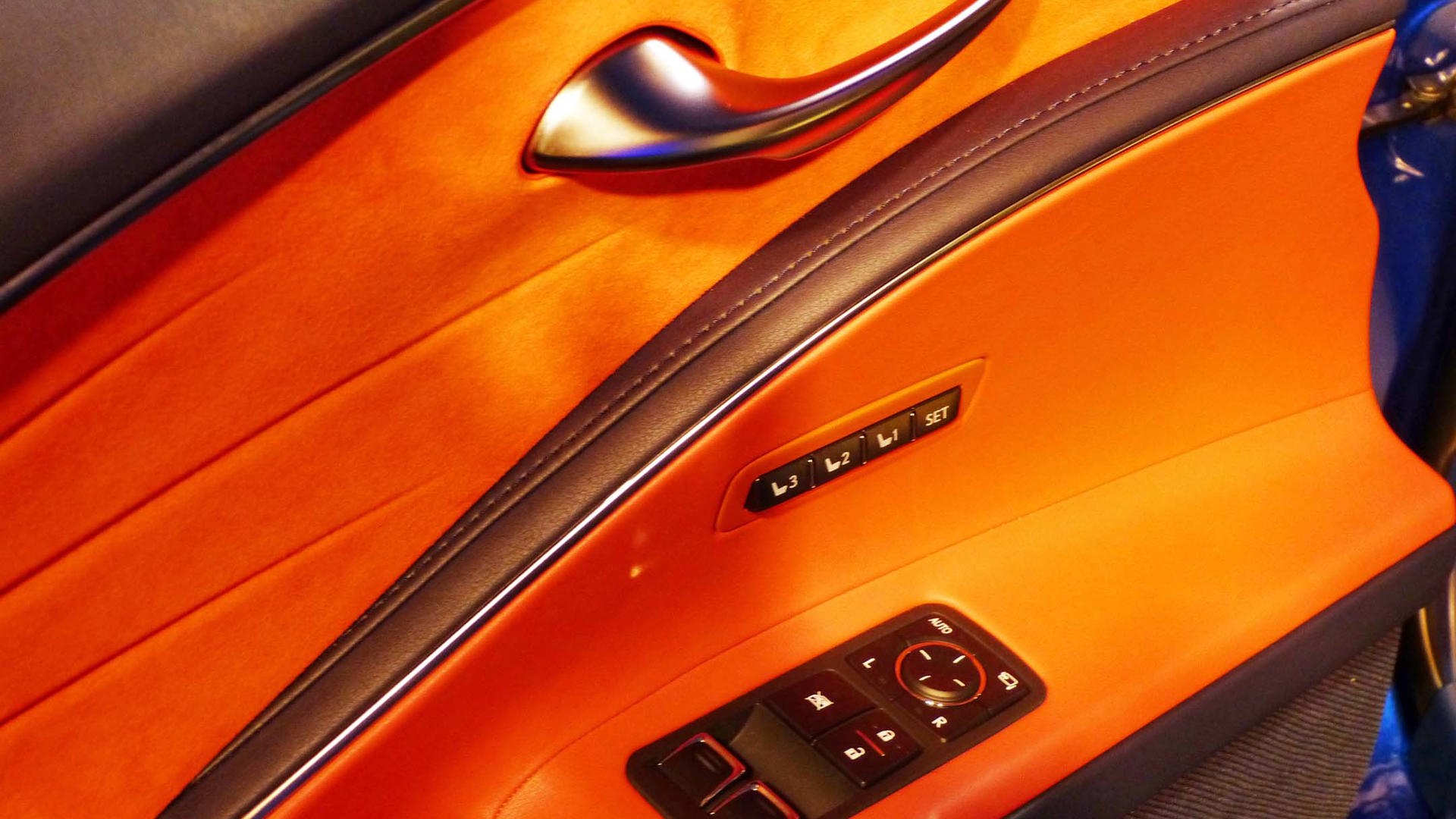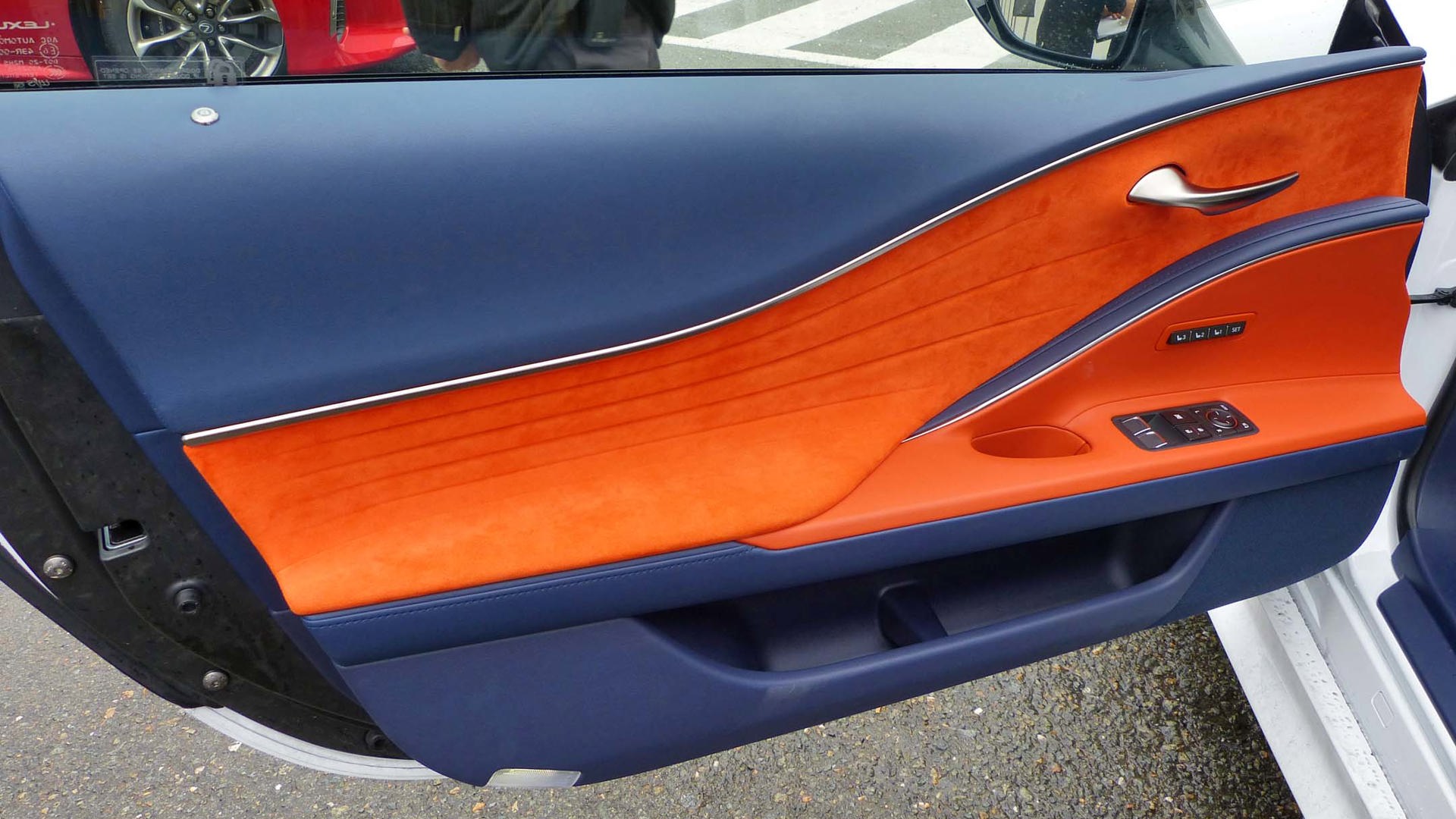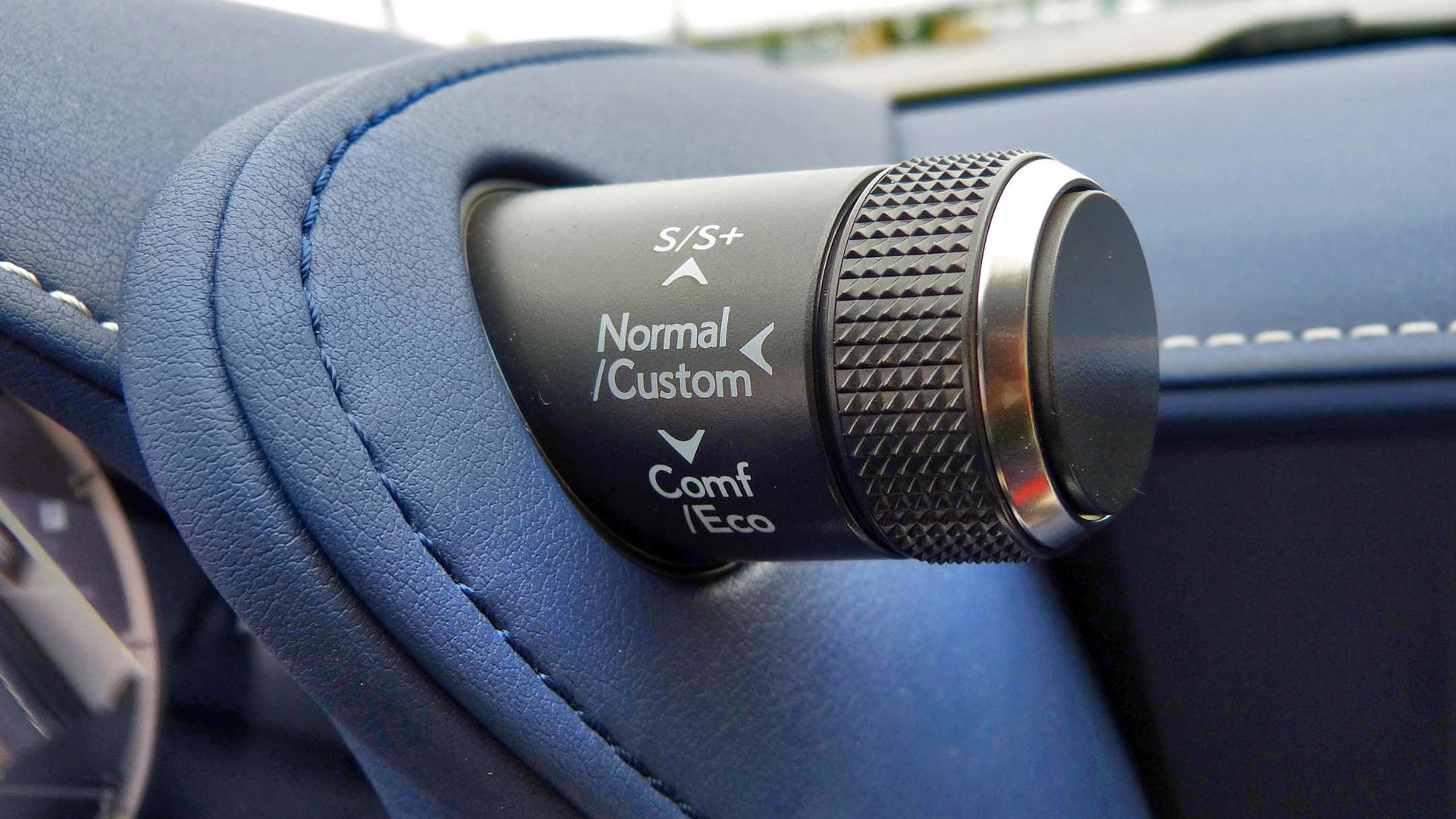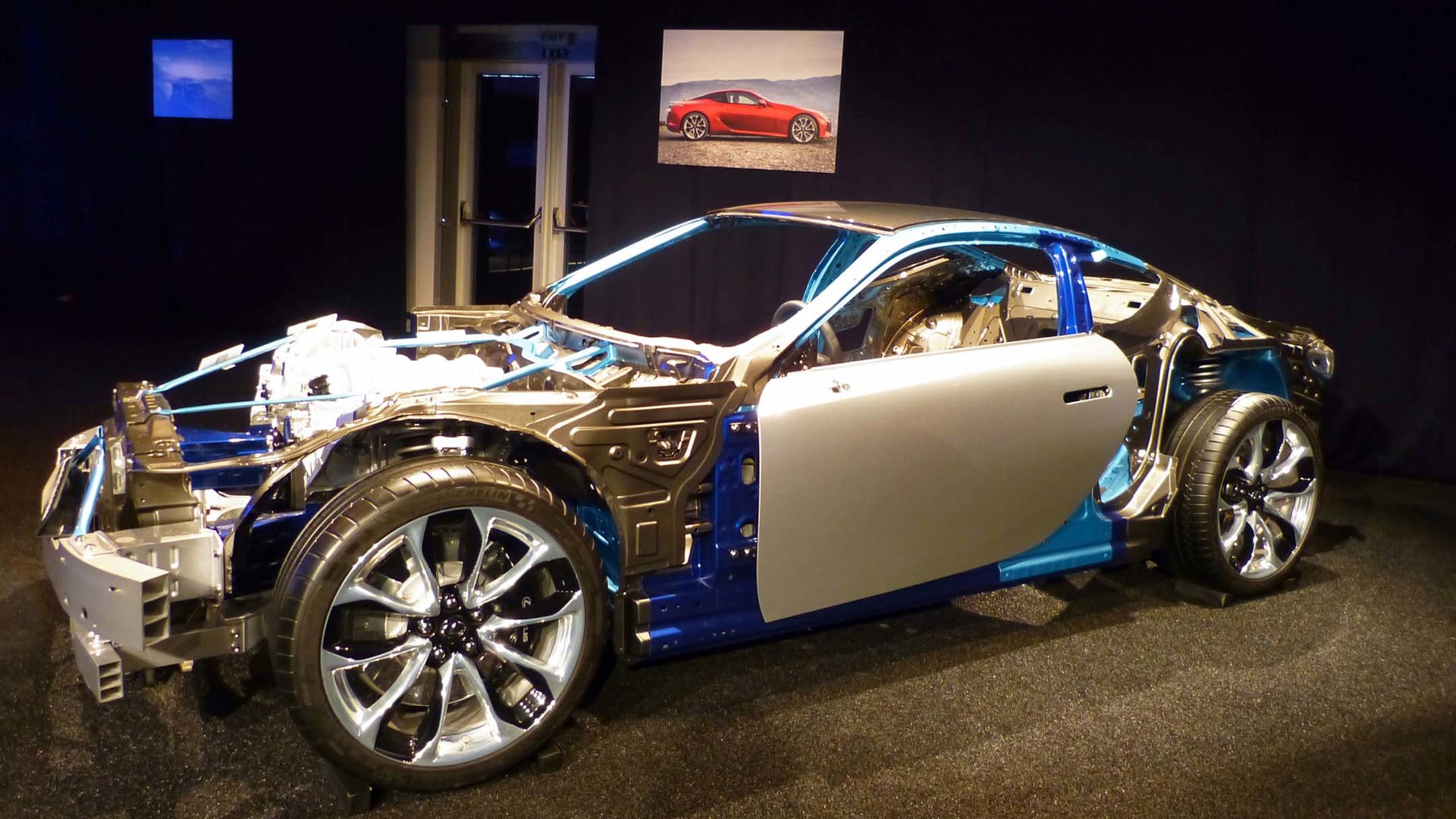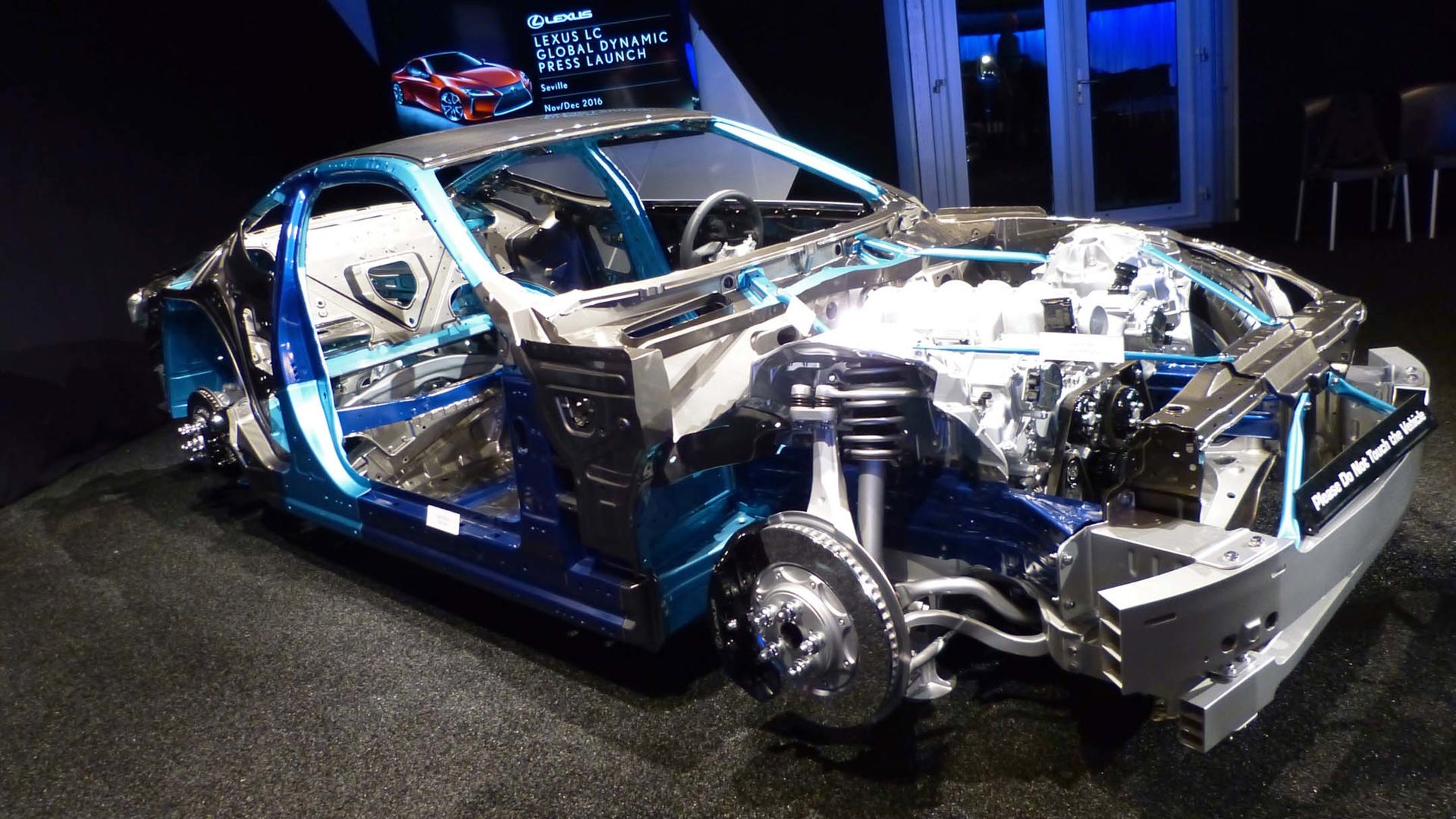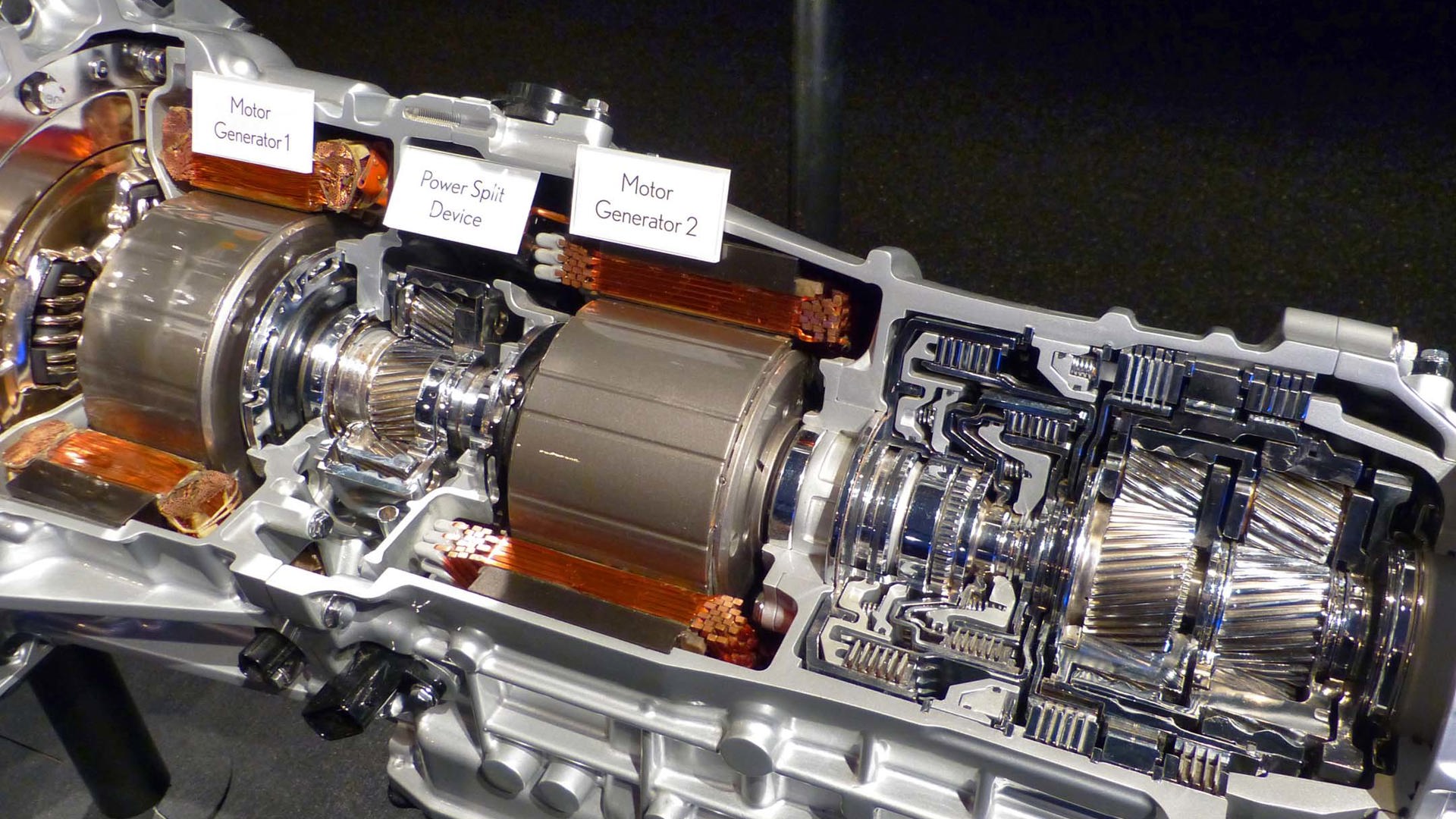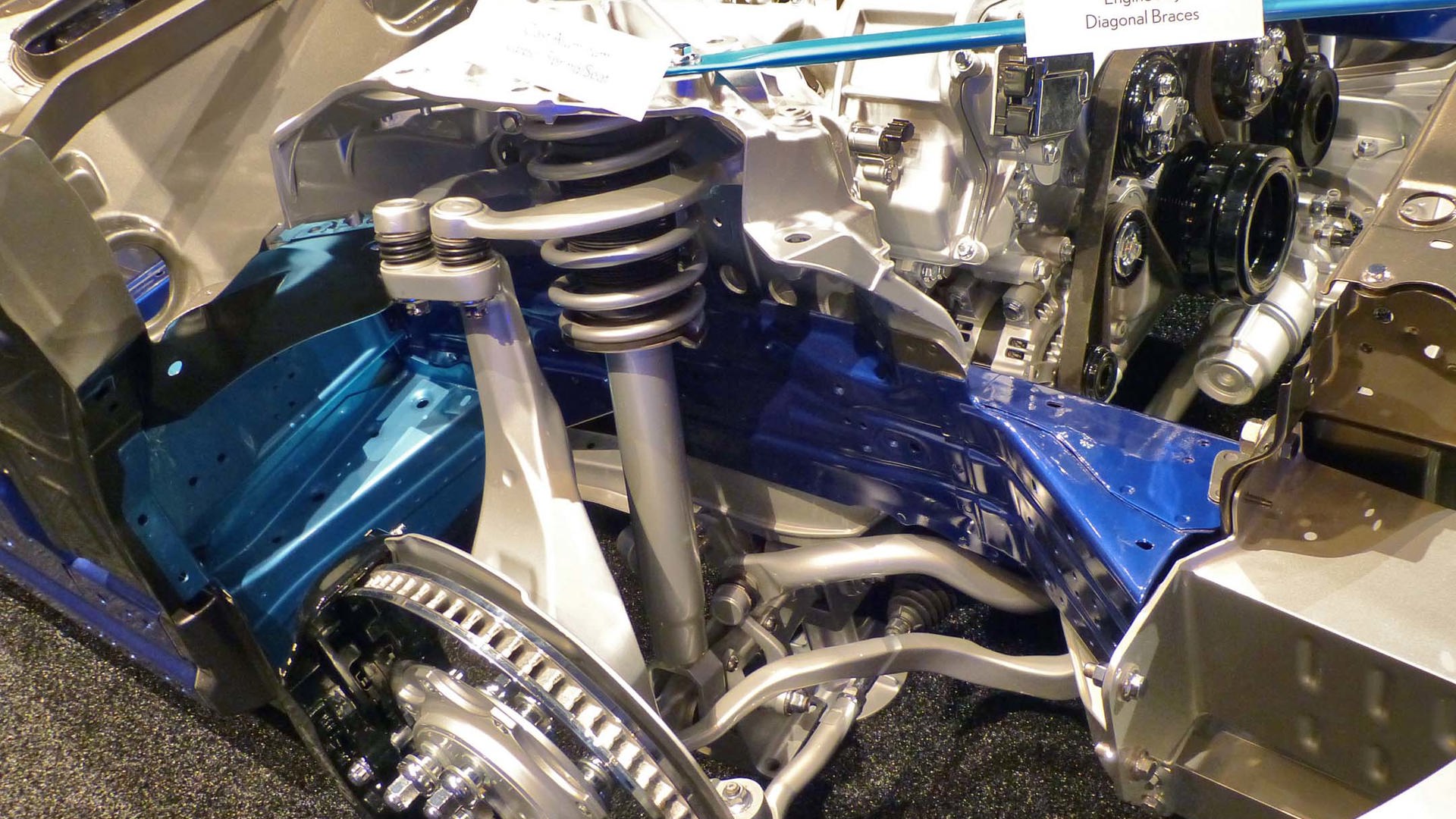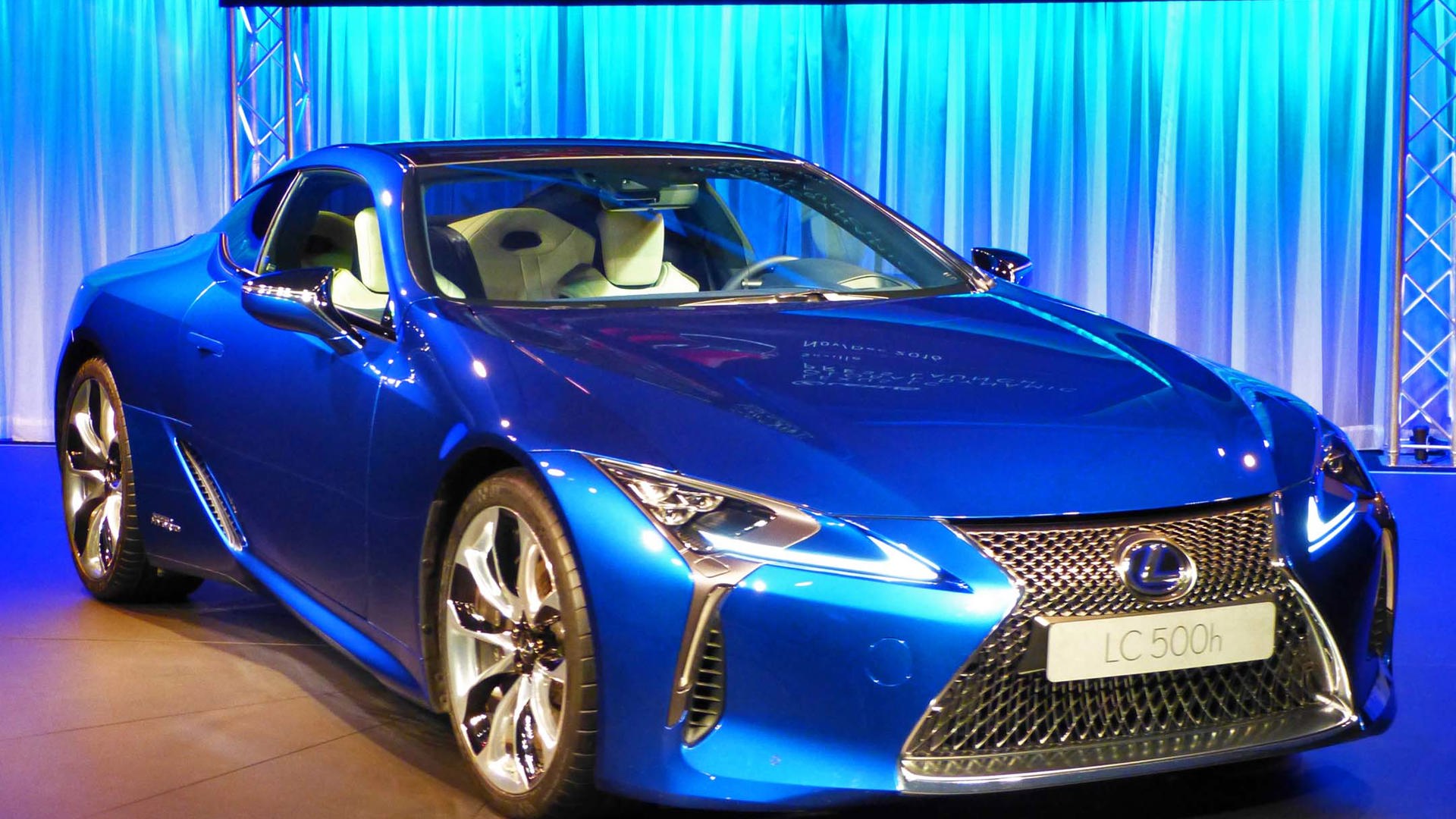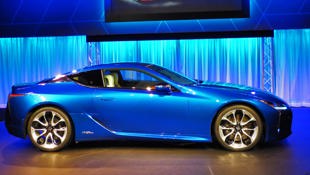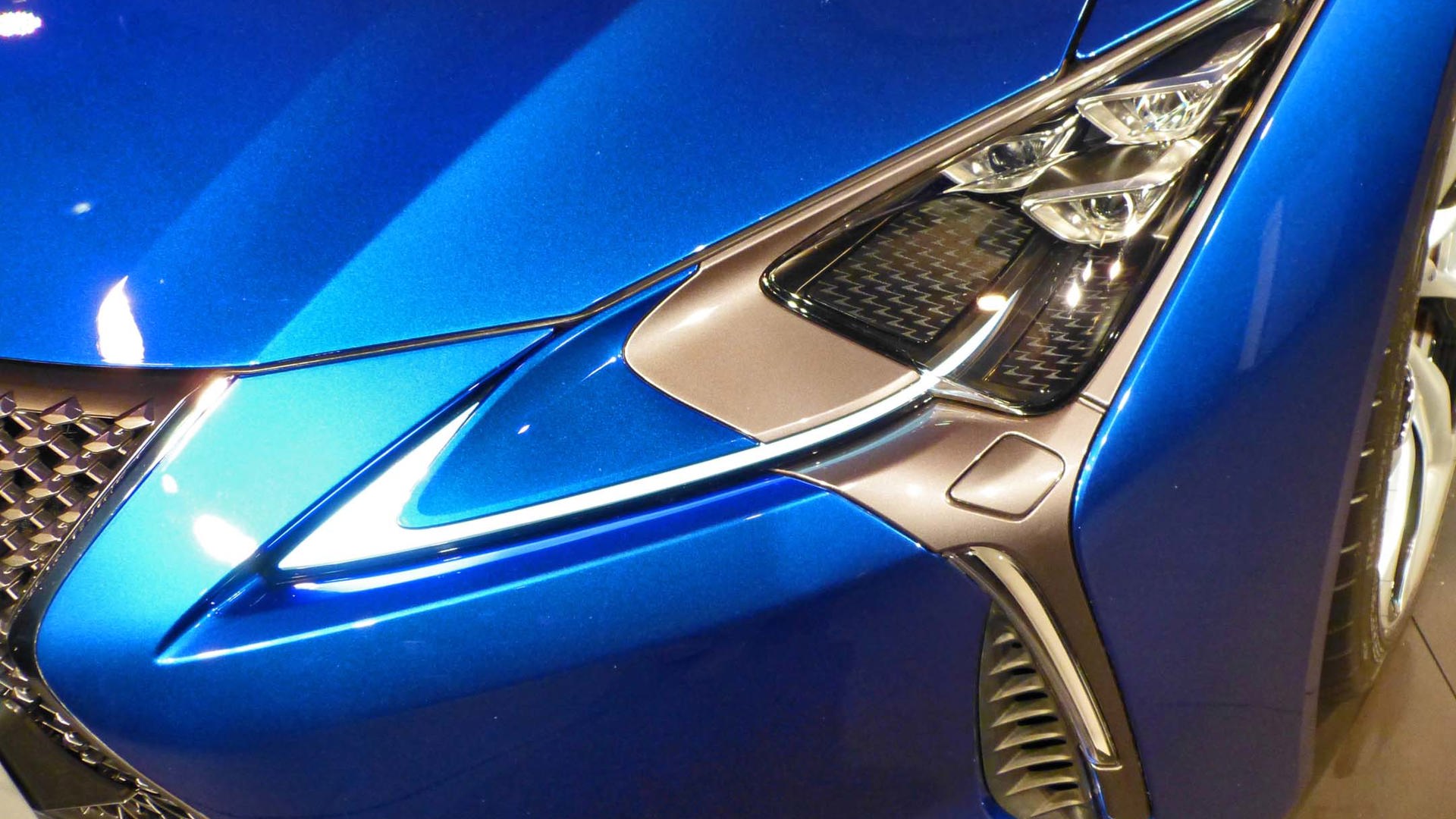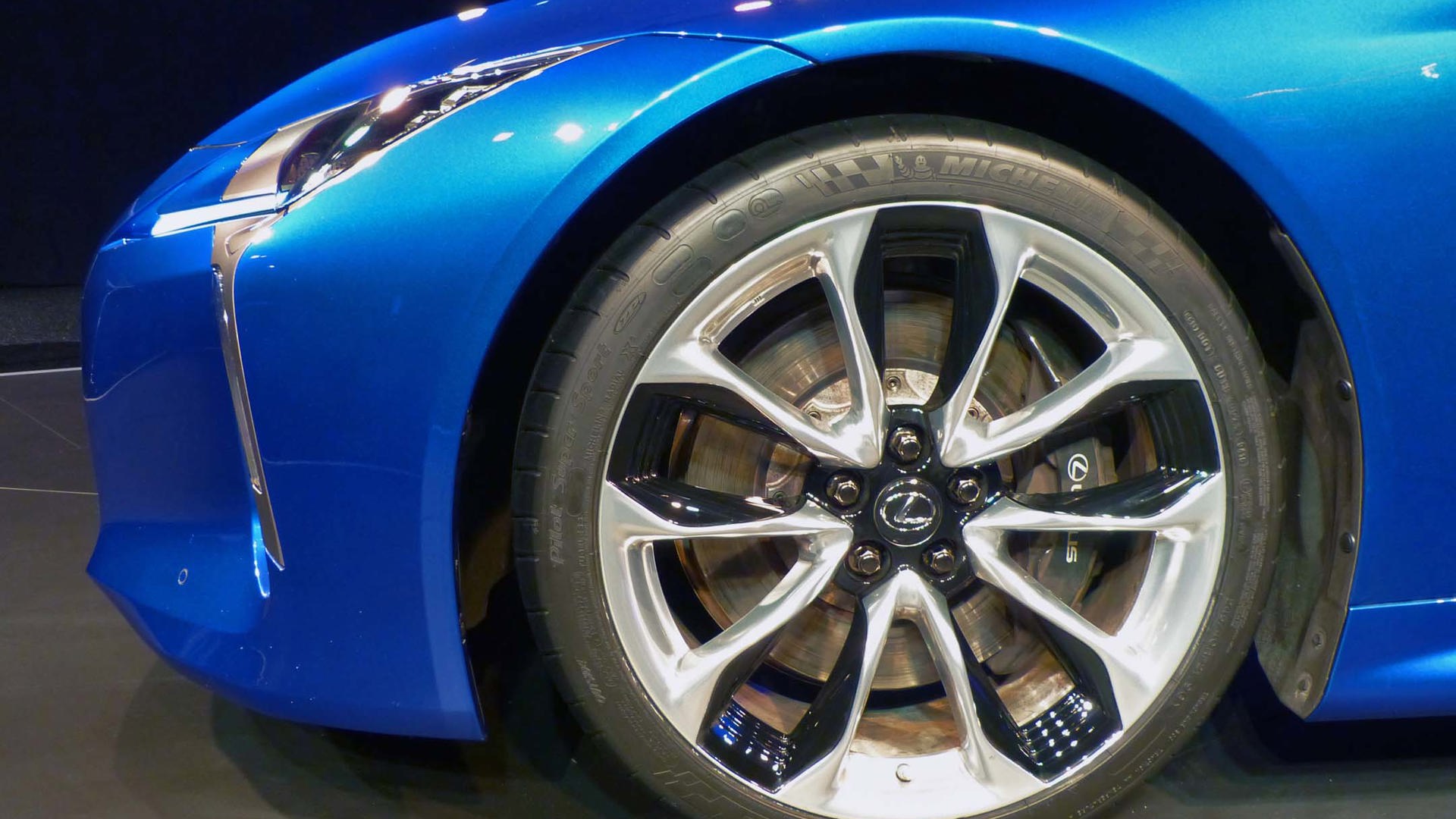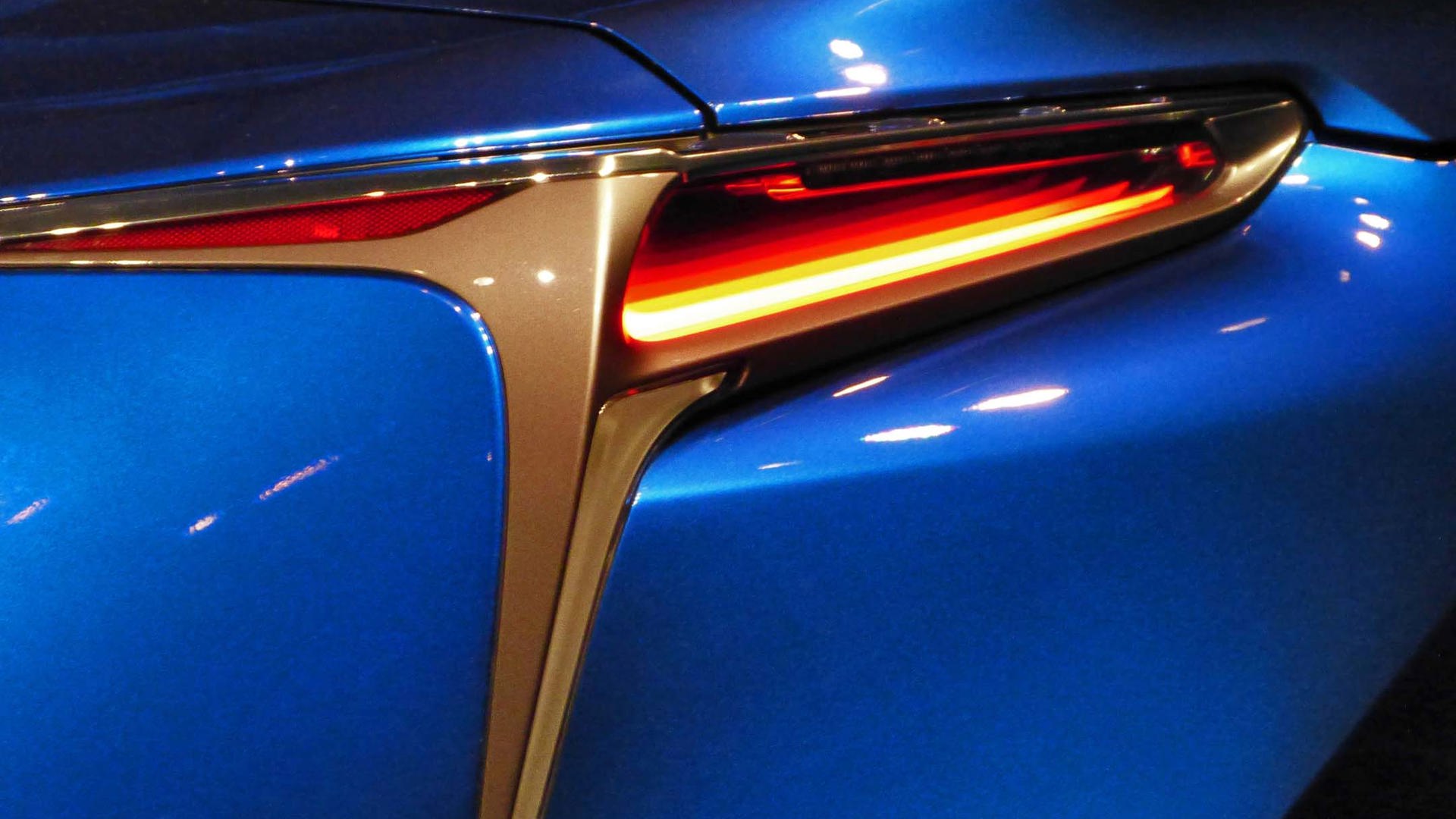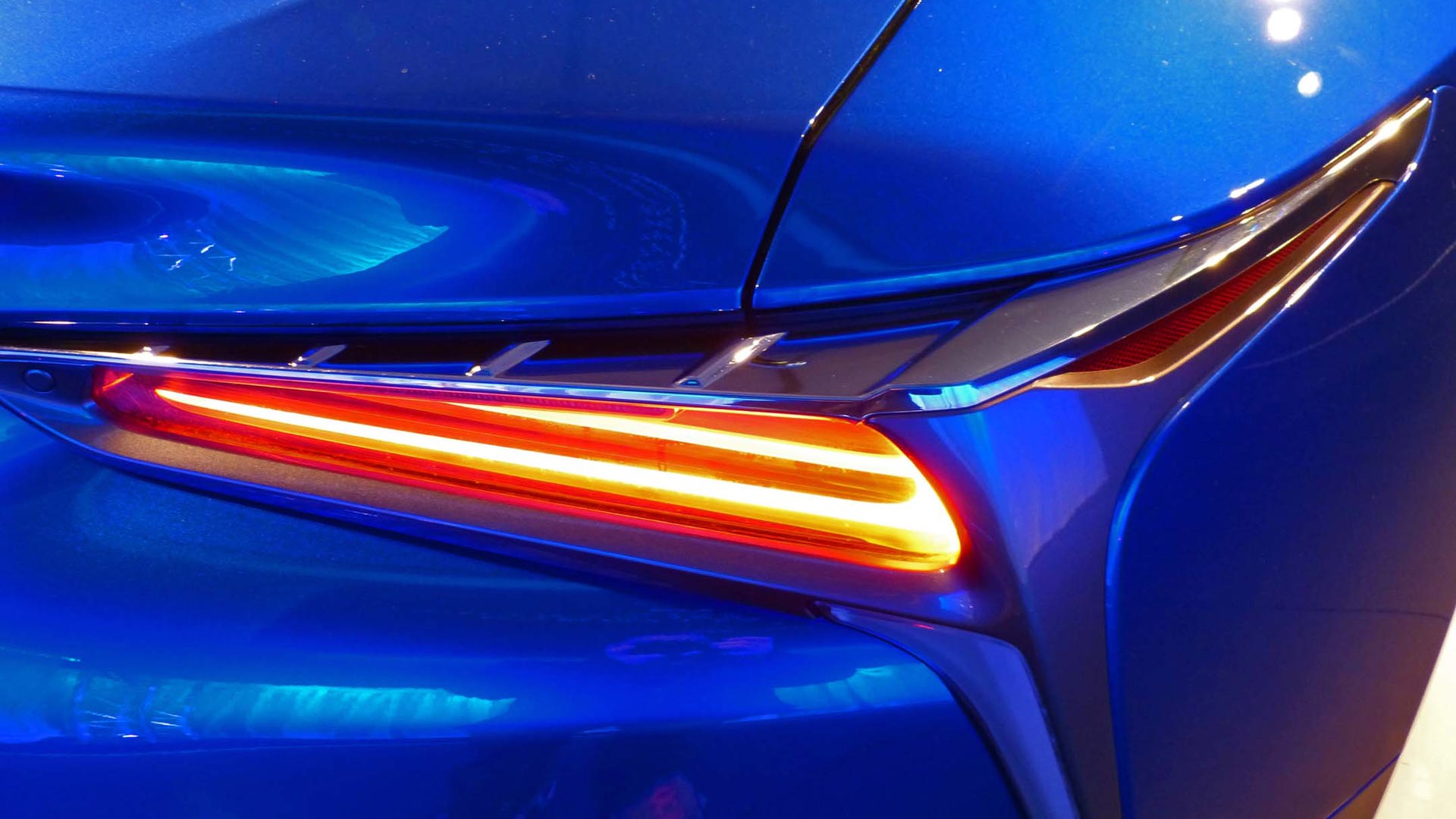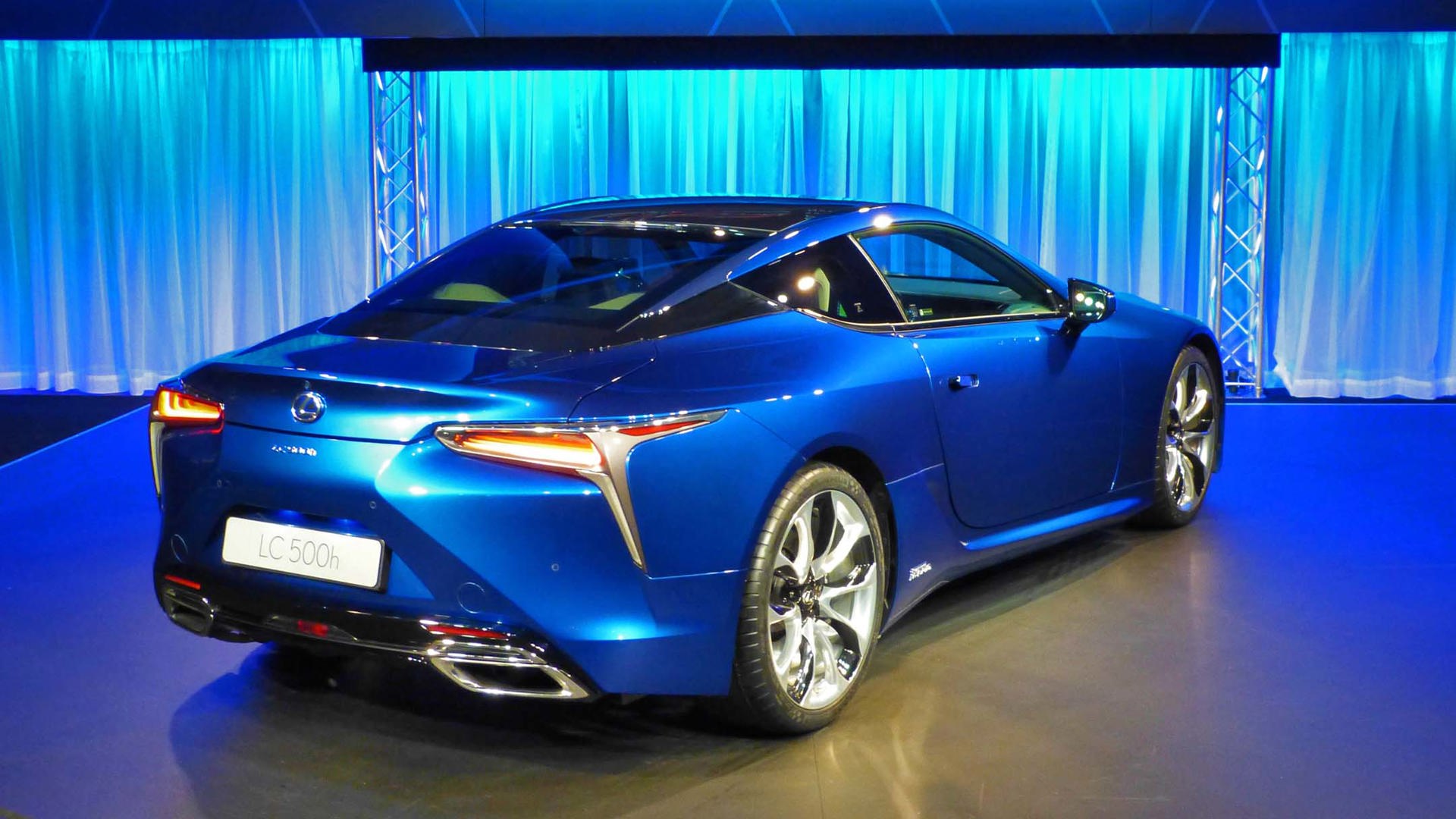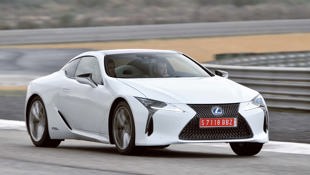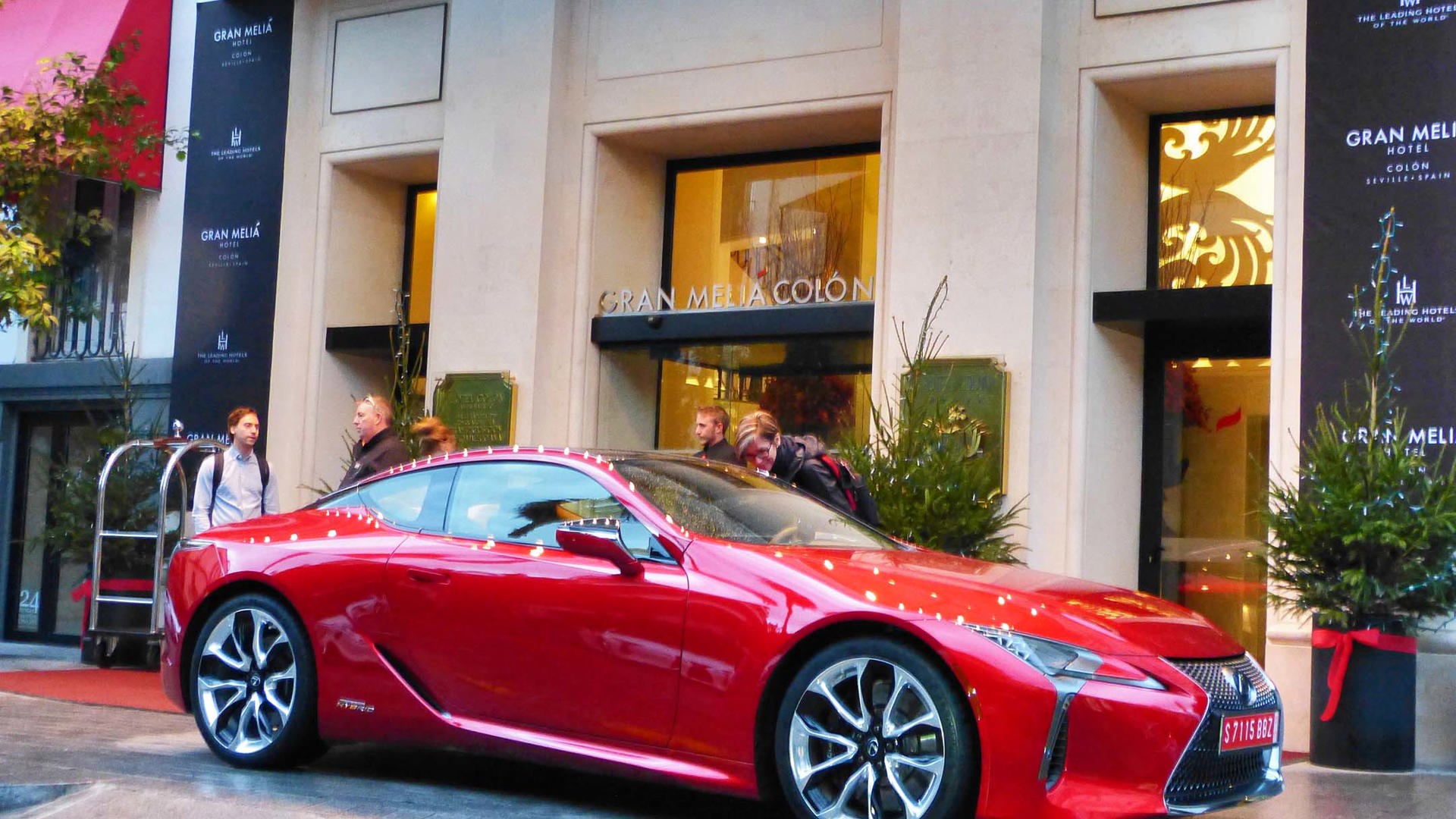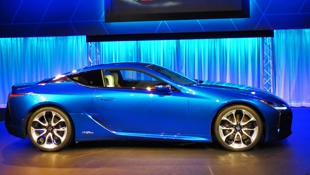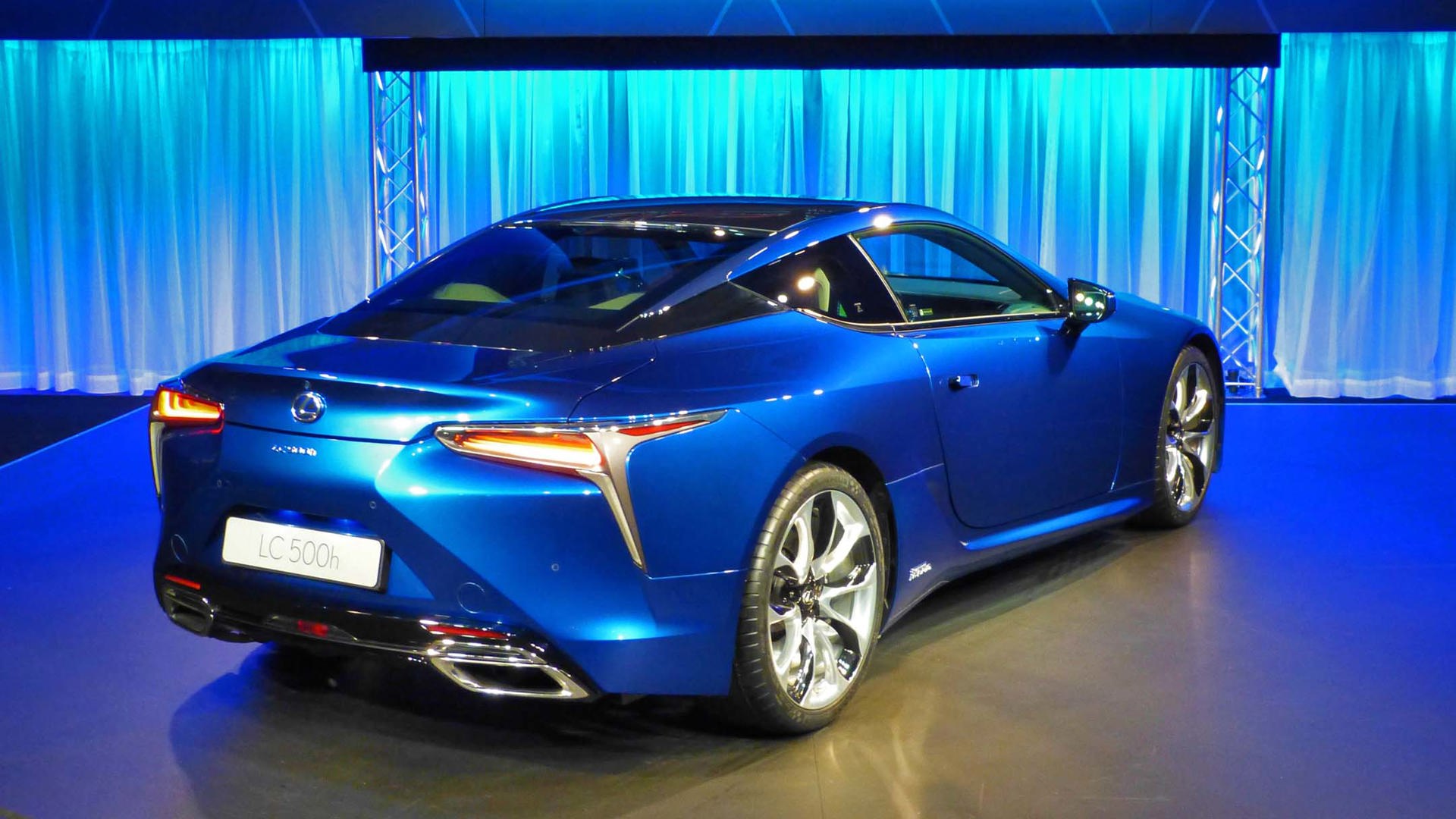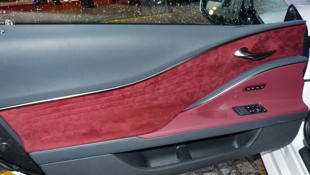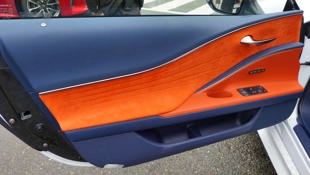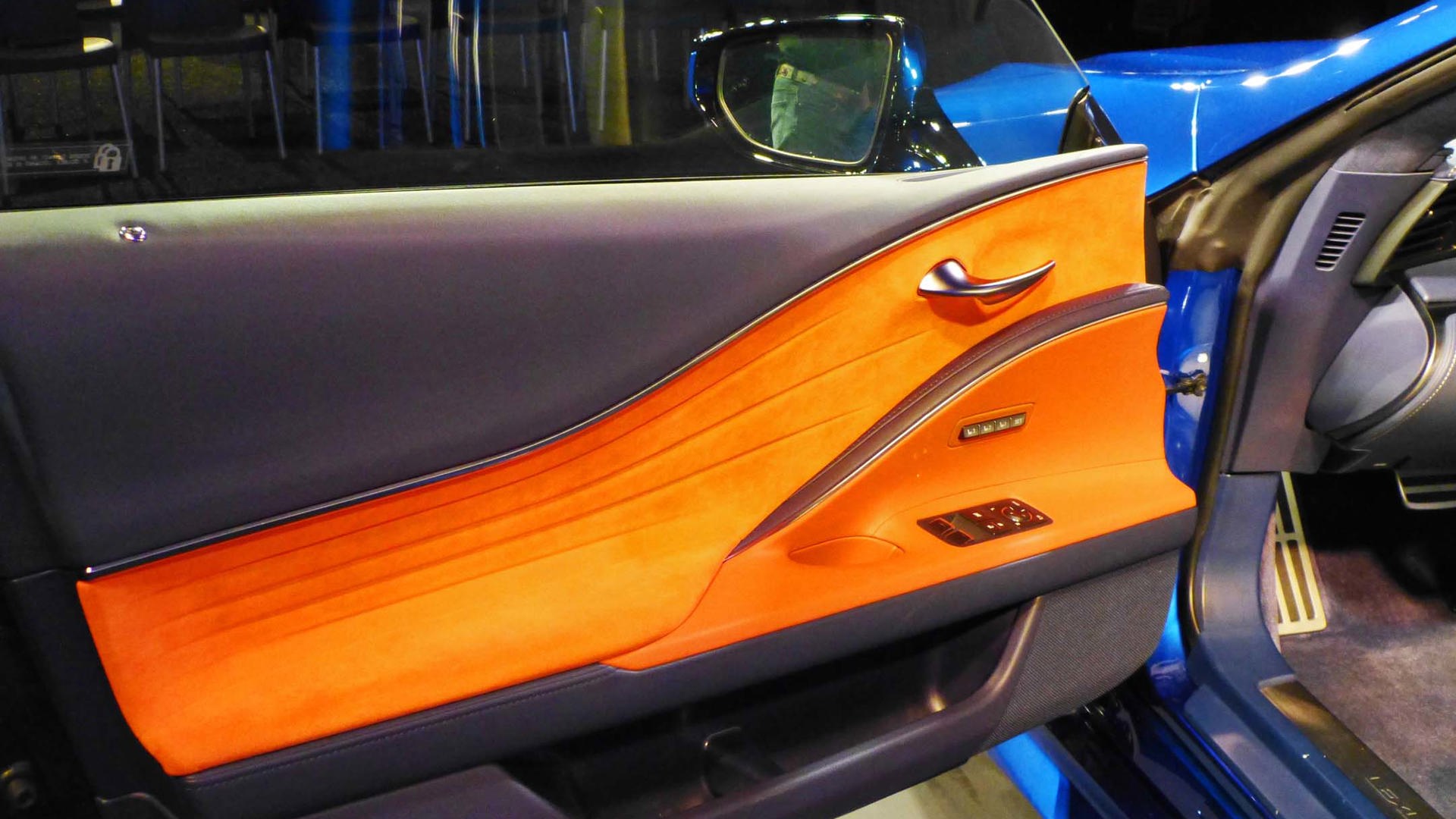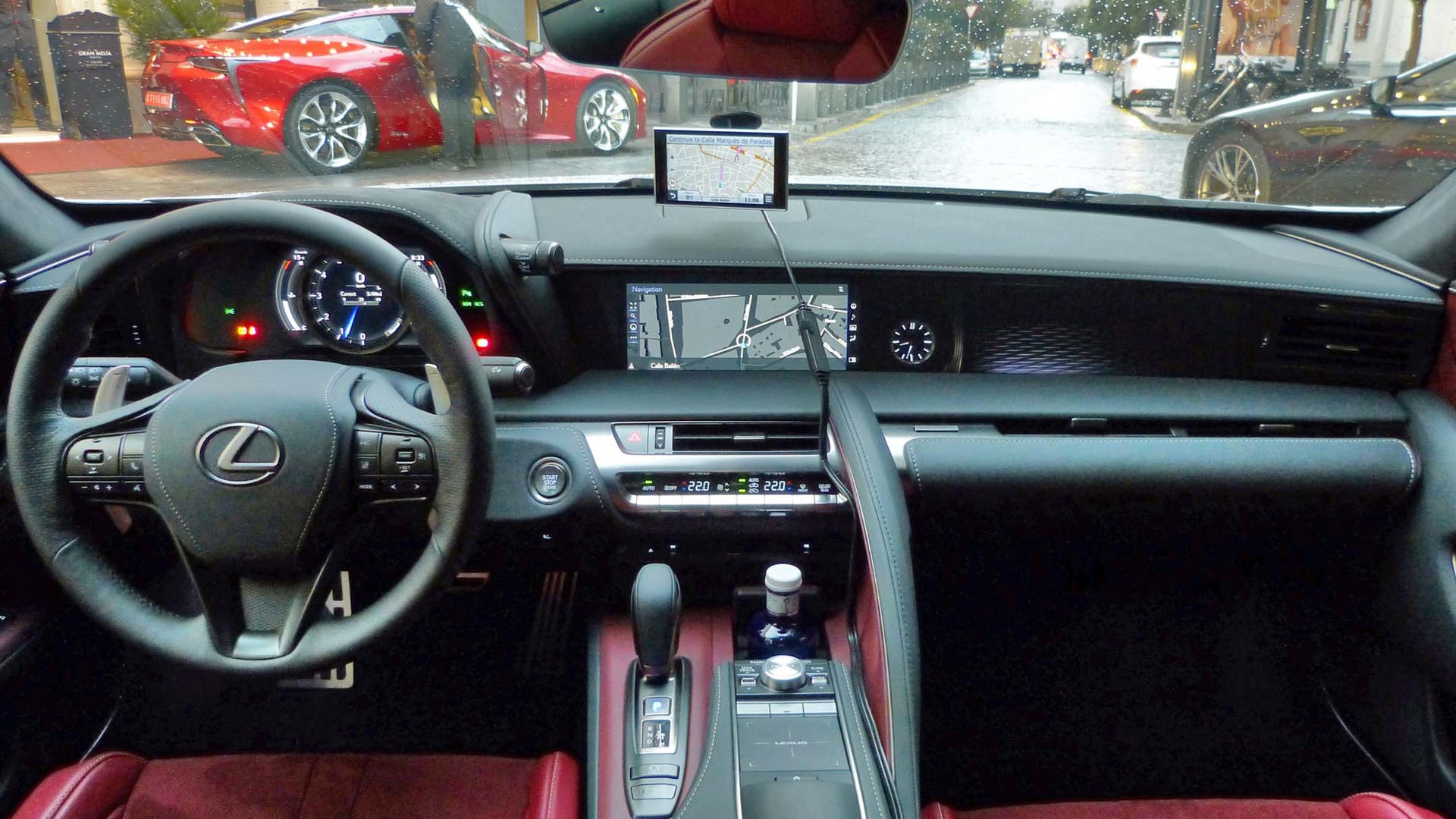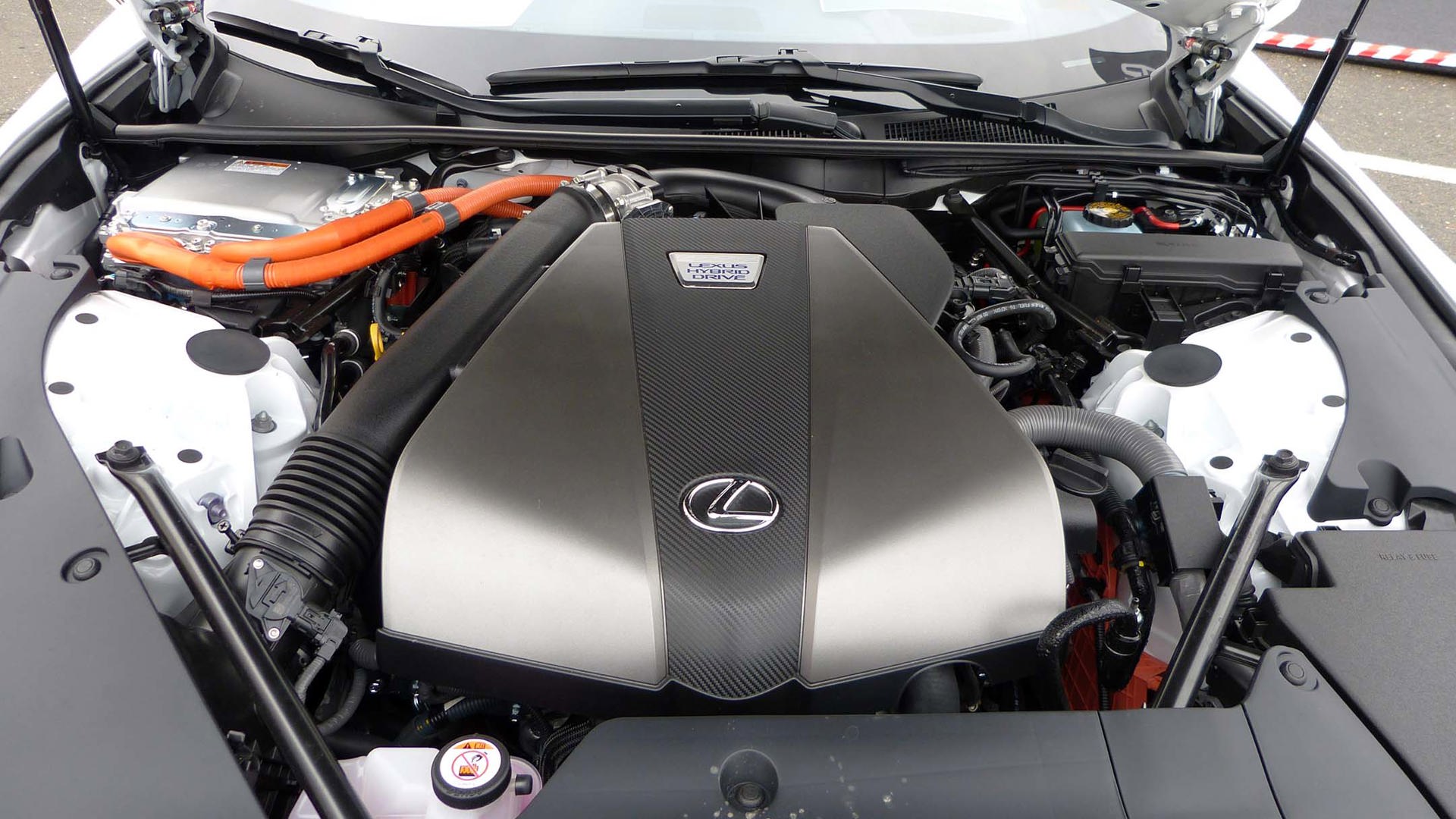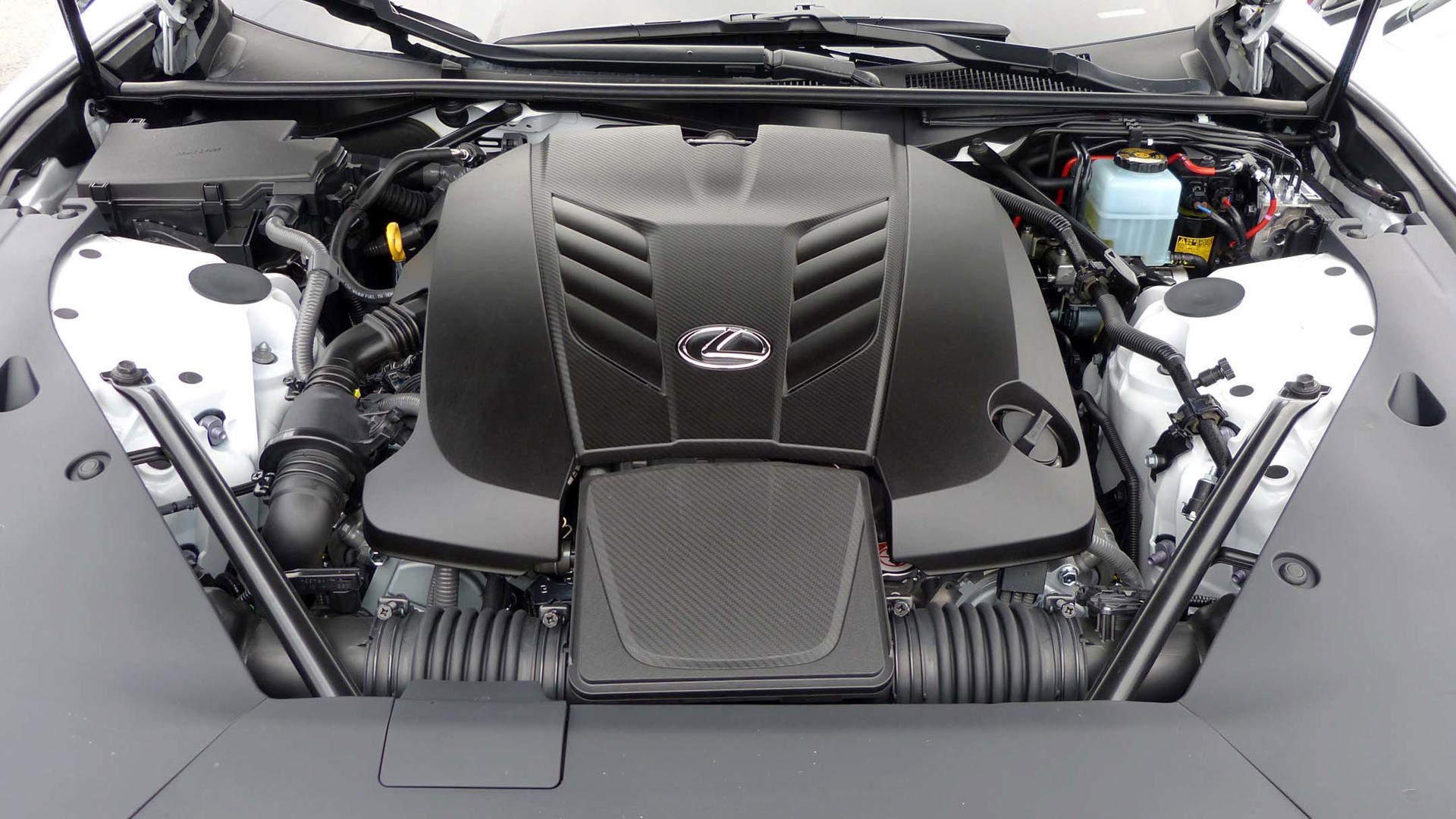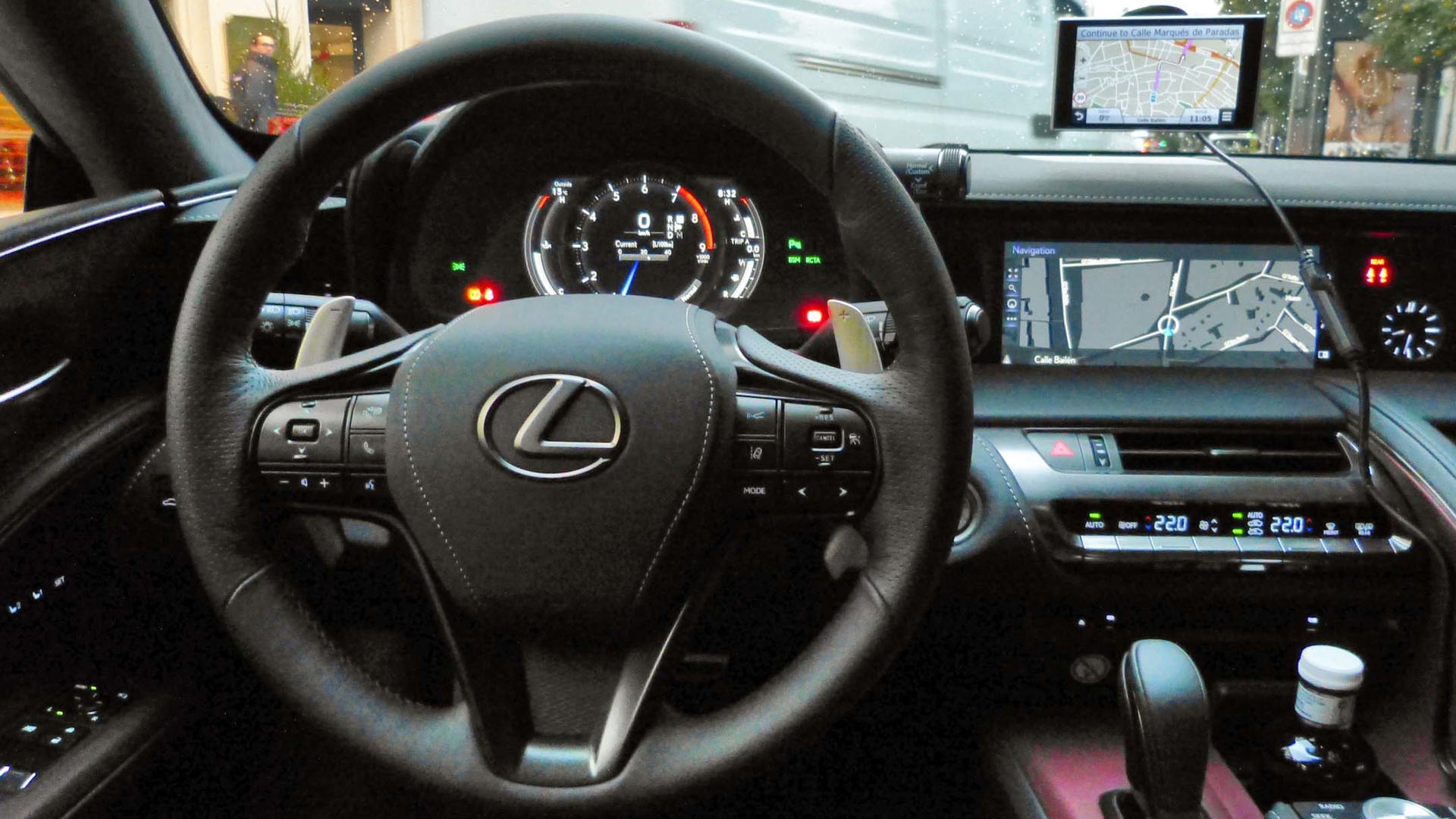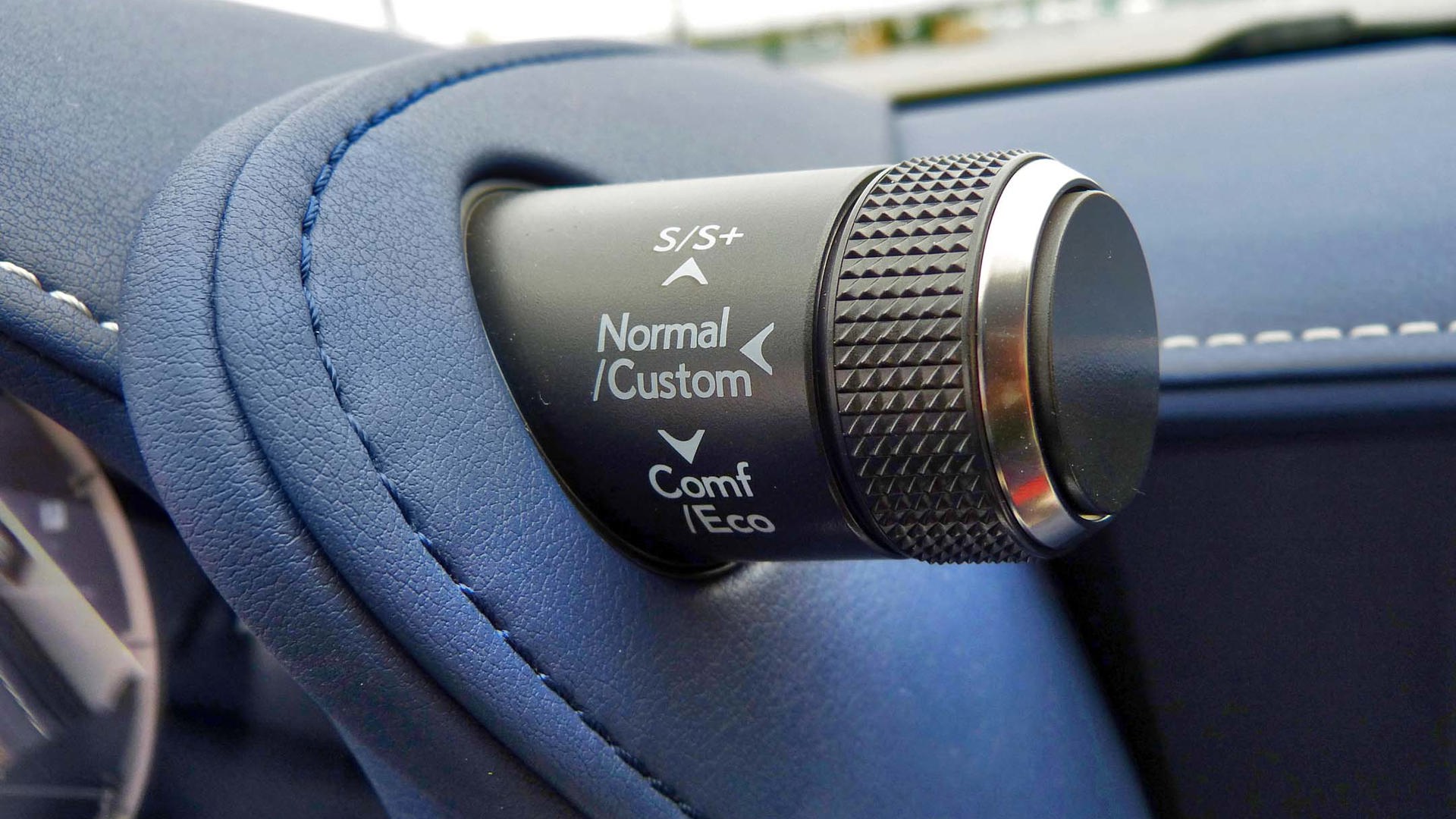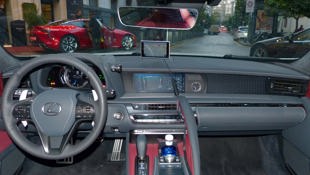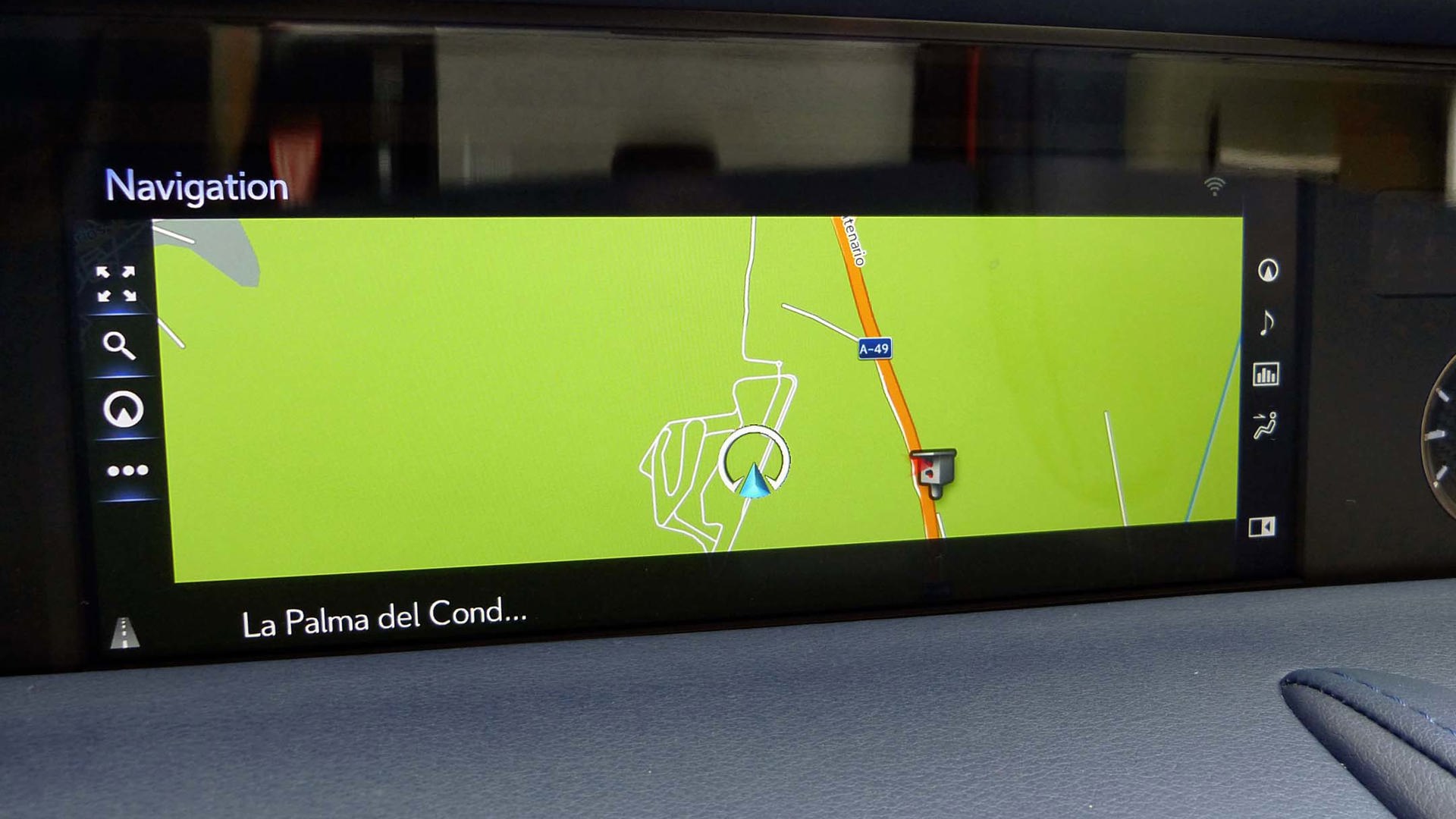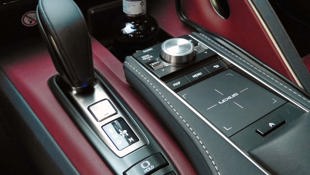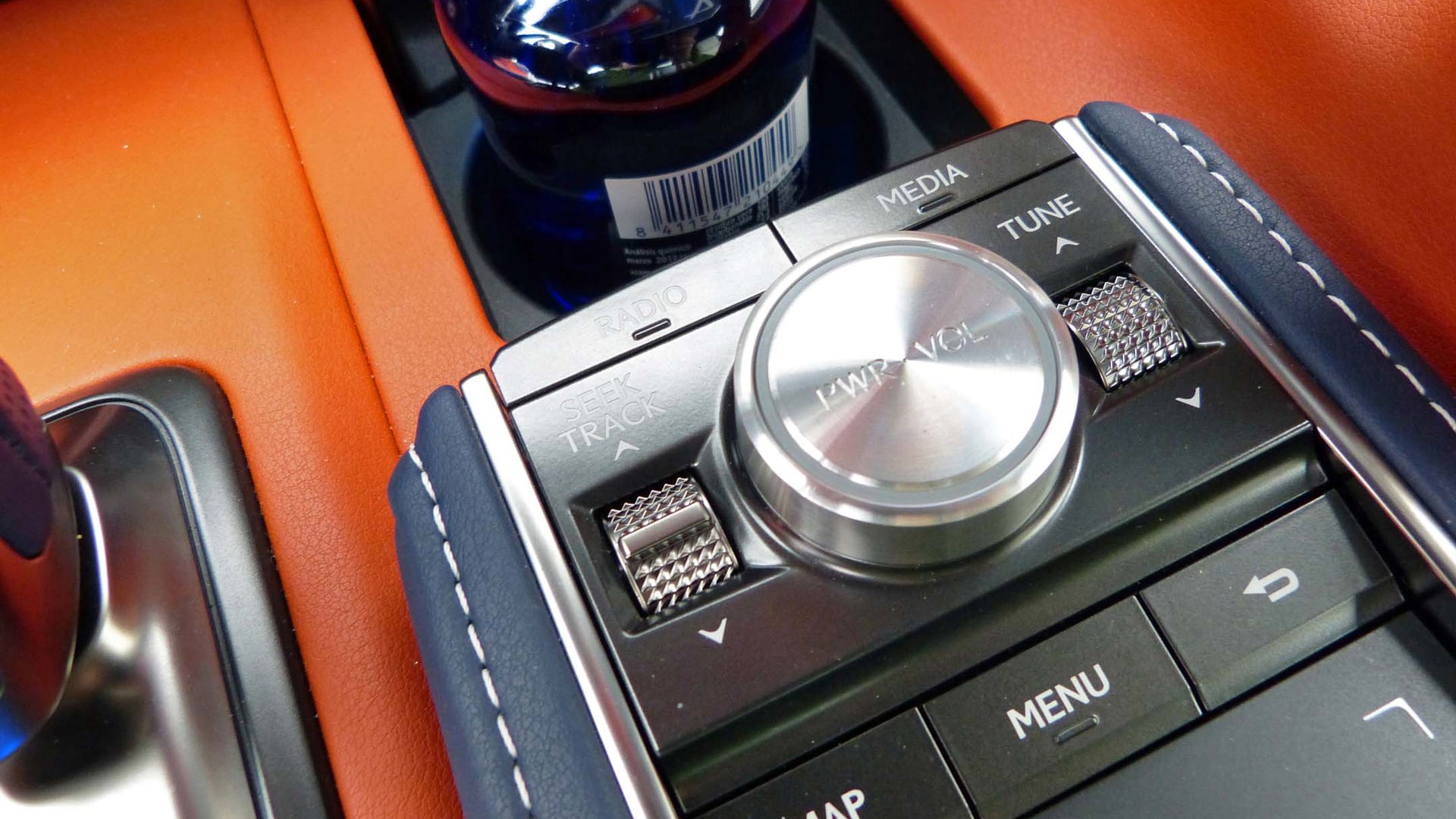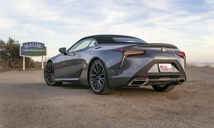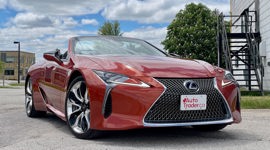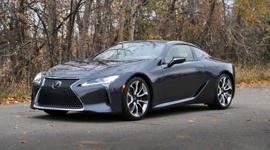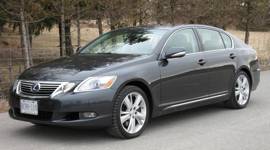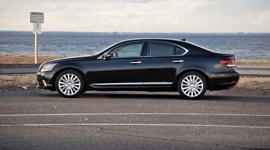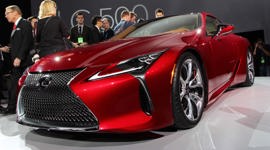I must be getting old. It turns out that I don’t always want my rear-wheel drive, V8-powered coupe to be at maximum attack at all times. It turns out I want there to be a “medium” setting.
“Holy cow, they actually built it!”
Lexus, yes, Lexus has successfully produced a car that had me reaching for the volume knob – and turning it to the left.
This particular bit of tarmac is twisty and winding, it’s undulating and picturesque and frankly beautiful. The sonorous naturally aspirated 5.0L V8 under the hood is feeding me a symphony via a re-routed airbox chamber that pipes thousands of tiny explosions from the cylinder heads to my eardrums every minute.
The gearbox, a 10-speed, has decided all by itself to be in the lowest possible gear as soon as the brake pedal is breathed upon and the result, right now, is overkill. In about 90 minutes’ time when we spit ourselves out of this particular valley and turn through the gates of the Monte Blanco circuit in Seville, Spain, this will be precisely what we need. In this setting, it’s kind of spoiling the rhythm.
Roads like this, in a 1,970 kg (2,020 in hybrid trim) grand tourer are about rhythm, building it, and maintaining it. We’re not out here to win the stage, we’re out here to enjoy the drive, to let the road fall away under us in the coddled sanctity of a tomb-like interior – only the engine note there to connect us to the outside world.
My co-driver is at the helm, I’m jealous of him right now, especially when he finds the true manual mode (you need to pull the lever down to “M” – the paddles only give you momentary control without that) and tells the LC 500 to hold itself in third and fourth. With fewer revs on board and less histrionics in the short braking zones we soon build a healthy rhythm – one that is at once faster and more comfortable for driver and passenger alike.
My stint was earlier when we were on relatively calm roads and I’d enjoyed the note of the engine and the way the thick steering wheel sat in my hands. The steering response is non-linear and it takes a while to get used to the way Lexus has tried to tune some feel into the electric rack, but it’s enjoyable once you get used to it.
The interior is Lexus – but more so. They claim there are no shared switches or buttons with other Lexus models, and yet it's unmistakably Lexus here.
On first approach I couldn’t help but gasp, “Holy cow, they actually built it!”
The design motifs that were present in the breathtaking LF-LC concept have been carried over with shocking fidelity in both the interior and exterior. It’s narrower, and higher off the ground, than the concept, but not noticeably so.
The seats were deemed not supportive enough in the concept and so were altered for production, with a special “sport seat” available with more shoulder bolstering and stitching designed to grip your clothes more strongly and grab a hold of your backside. There is a softer "comfort" seat too.
The three-LED projector headlights are designed with a special shallow housing to allow them to sit right at the edges of the LC’s shapely nose, and there is similar extremism in the taillights. There is actually only one LED light-source back there, but a magic house of mirrors gives the illusion of infinite depth back into the trunk. The darker it is, the more pronounced this effect becomes.
The lines of this LC have been written about far too much by people like me. None of us have or will do it justice and neither will our cameras. It is spectacular. There are lots of tough, cool, epic, awesome, stunning, gorgeous cars out there. This is another level of aesthetic prowess.
How the designers have managed to festoon this coupe with spindle shapes and still maintain its elegance and sheer eroticism I’ll never know, but they have.
Those peeking under the hood, however, will be disappointed. This same engine in the RC F gets vivid blue anodised intake manifold tubing that sets off the engine bay – here, because of the engine noise plumbing they’ve had to resort to a hideous black engine cover. It might as well be the hybrid under here, and the hybrid engine bay is no prettier than that of a Camry. I wonder if one could ask for an engine-cover delete and opt for the prettier engine bay instead in the future? I hope so.
I also hope we get the orange and blue interior we were shown in Spain in the future. Right now we won’t get the best colour package in the catalogue and that’s a major disappointment. In Canada we will only get the Ochre, Rioja Red and Black interiors. The black is boring, the Rioja is imposing, the Ochre is nice. But the orange and blue is spectacular.
But let me back up a little. The Lexus LC 500 and 500h is a new flagship for the brand. Here in Canada, pricing hasn’t been announced, but the 500 has an optional Performance Package, which is standard on the hybrid model – in every other Toyota or Lexus, the hybrid is the higher-priced model, and that continues here. So really, the 500h is the flagship and the 500 is the flagship’s understudy.
Unlike most other hybrid/conventional siblings, the only differences between the two appearance-wise are the badges. Both are available in the same colours and interior trims.
The hybrid mates a 3.5L V6 to two electric motors and a “10-speed” transmission for a peak system output of 359 hp and 257 lb-ft of torque. Why “10-speed”? Because the two electric motors are connected via a “drive split” device (read CVT). After the second electric motor there is a gearbox with four real gears and the whole system has 10 set “gear” combinations between all the units.
The difference between that system’s performance as expected and real life is significant. After sitting through the technical presentation, I thought for sure this box would be lazy, slow and painful. It was instead compliant, smooth, unobtrusive and, when called upon, could be reasonably sharp. It didn’t kick down with anywhere near the urgency of the V8-powered LC 500 though, and that made a lot of difference on the track.
Did we mention that Lexus put us on a track, in both cars? There’s a certain amount of bravery involved in giving journalists laps behind the wheel of both the hybrid and the V8 back-to-back on the track, and the reps were quick to point out that we shouldn’t be comparing the two, but rather experiencing the capabilities of each. LOL.
The V8 drivetrain really came into its own here. Despite slippery conditions, we were able to build a hefty pace in the 471 hp 5.0L V8, which pushes out 398 lb-ft of torque. It too is connected to a 10-speed transmission but this one is a legitimate 10-speed. There is a torque-converter-style automatic clutch inside the engine casing which allows it to be a multi-plate design, this allegedly allows better response without going to a dual-clutch transmission.
Where in the mountains, Sport + was too aggressive, here on the track it was ideal, keeping the LC in the right gear to generate bulk power and set the backside squirming on corner exit. Not for the first time, I was shown the folly of trying to use the paddle shift on the track – not because they’re slow, they’re really not, but because the gearbox does a better, more precise job of knowing where and when to shift than I do.
My favourite part of this transmission is the upshift – but only in auto mode. When left alone, the gearbox will fire off an upshift with frightening ferocity. I’ve written before about the Lexus transmission’s trait of delaying between the command on the paddle and the resultant change. That tendency is here too. Ask for a shift, and the computer takes its time deciding if it agrees with you before executing your command. Once it decides to act though, the cogs swap very, very rapidly.
The engineers say they’ve programmed this Aisin unit to be “rhythmic” in its shifting. The first few gear changes are set so they happen on beat if you’re full-throttle consistently, the later changes spread out slowly. The dancer in me loved it, the cynic in me was buried under the dancer.
We should point out that the LC is down on horsepower to its rivals – my guess is there’ll be an LC F in the future with somewhere more like 600 horsepower. But they’ll probably make that one AWD and ruin it.
As is the LC is nicely balanced in both guises. The Hybrid has the better 51:49 percent front–back weight distribution, the V8 52:48 – because battery pack. The engineers claim there has been a big improvement in camber rigidity for both the double-wishbone front suspension and the five-point rear. The continuously adaptive shocks can change multitudes of times per stroke for a smooth reaction to bumps and road imperfections – a theory we tested on a four-inch-high bump mid-corner on one mountain section – the LC loped over it without changing direction even slightly. Later on, a milder depression had a more pronounced effect though.
Solenoids act on the rear bushings to “turn” out the rear tires in opposition to the fronts. They’ll move up to three degrees to improve stability and response during high-speed lane changes and cornering; those same solenoids act on the bushings to match the front tires in low-speed manoeuvres for tighter turning.
As mentioned, the Performance Package will be standard on hybrid trims and an option on the LC 500. It adds a proper mechanical Torsen limited-slip differential, hollow-cast 21-inch rims, active rear spoiler and carbon-fibre roof to help that weight distribution. Given that 40 percent of Lexus customers – including RX customers – already opt for the F-Sport package, it’s likely most LCs will come with this option.
The chassis is smooth and composed, not the scalpel that the RC is but no land yacht either. On track it communicated its limits to me quickly enough and I found I was able to finesse it out of the understeer my ham fists generated in the first place. I found myself less willing to get back into the throttle than I am in other cars though and that’s because the LC takes a languid approach to changing directions. It will get there, but it’s a rhythm method, not point-and-squirt, that will achieve results here.
Both models get a standard 12-speaker Pioneer system that for this half-deaf motorcycle enthusiast was perfectly adequate, whereas true audiophiles will prefer the 13-speaker Mark Levinson system. Lexus’s HMI comes under a lot of fire for being finicky, difficult to use and not particularly intuitive – and rightly so. It might look good, it might be unique, but it is in urgent need of a rethink. At one point it took us a full eight minutes to reset the fuel economy reading – in the end it was buried down two menu layers deep and given a silly name “clip”.
When we did, we saw a 7.6 L/100 km average on the highway. Expect the final combined number to sit somewhere around 7.5 L/100 km for the hybrid. There’s also an EV mode that will sustain speeds of up to 140 km/h, but its total range (at city speeds) is only 2 km. The fuel economy offered by the V8 is utterly irrelevant.
Other cool tech includes the pedestrian-friendly bonnet that will fire upwards to cushion the blow when you run over a text-walker on the way up Bay St. The system is even staged and can fire the bonnet up at different rates depending on the speed of bumper-to-lower-leg impact. That’s a lot of effort and energy to put into a car with such low target sales – Lexus expects to sell 120 units in Canada. I asked if this bonnet system was regulated because of the low-slung nose but apparently it isn’t, it’s just part of the Toyota family’s commitment to safety tech.
Exiting the racetrack and heading back down the same stretch of mountain road, I’m behind the wheel, but this time in the hybrid. There’s a light mist falling but the roads are feeling more welcoming as the 500h has been programmed far more on the tourer side than the LC 500. It’s the nicer, gentler version, with the volume set by default to an easy listening level.
I prefer the LC 500. It’s louder, angrier and more aggro – and sometimes it’s too much for the conditions. But I can always turn it down.
The LC will be available in Spring 2017.
